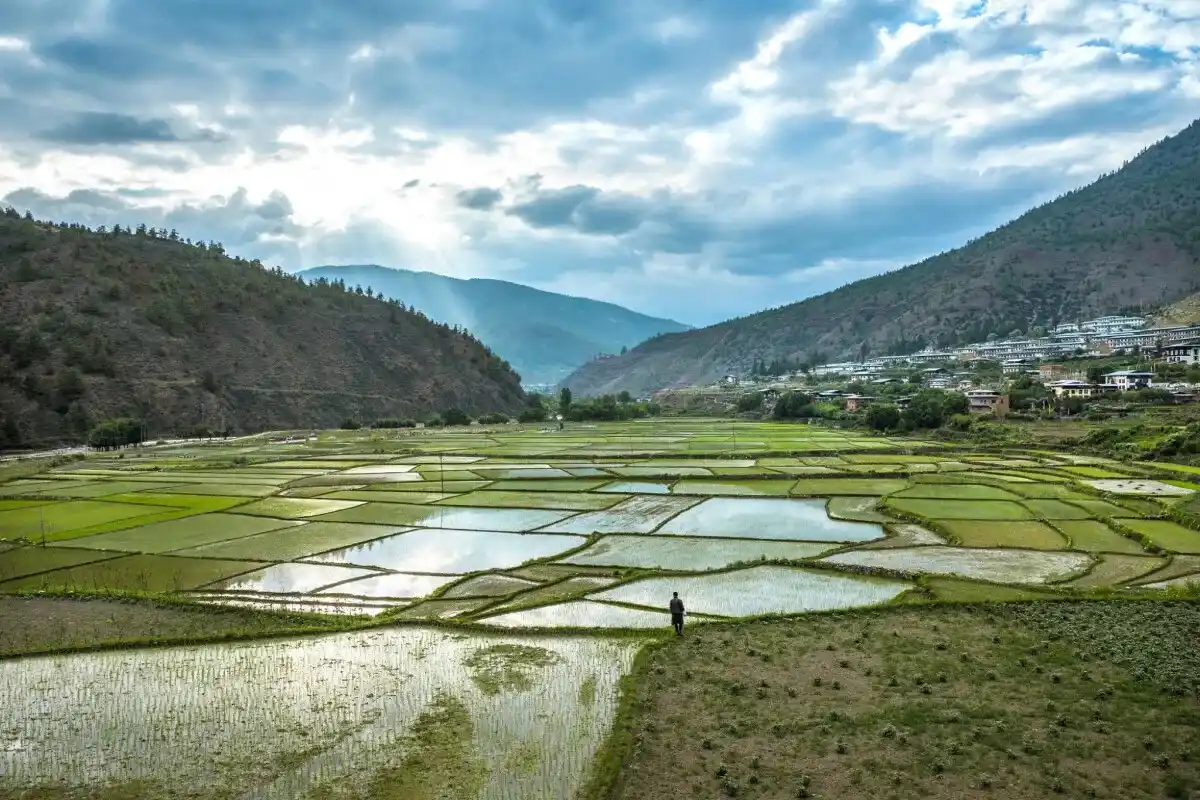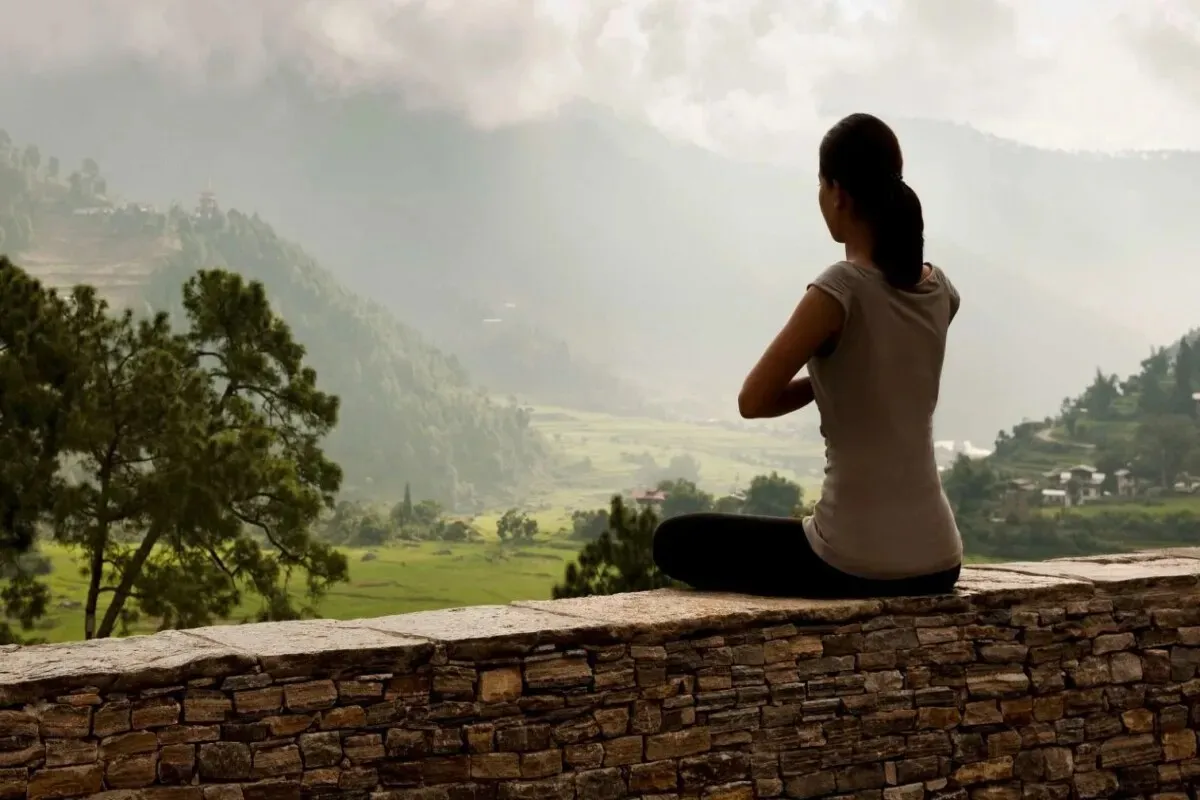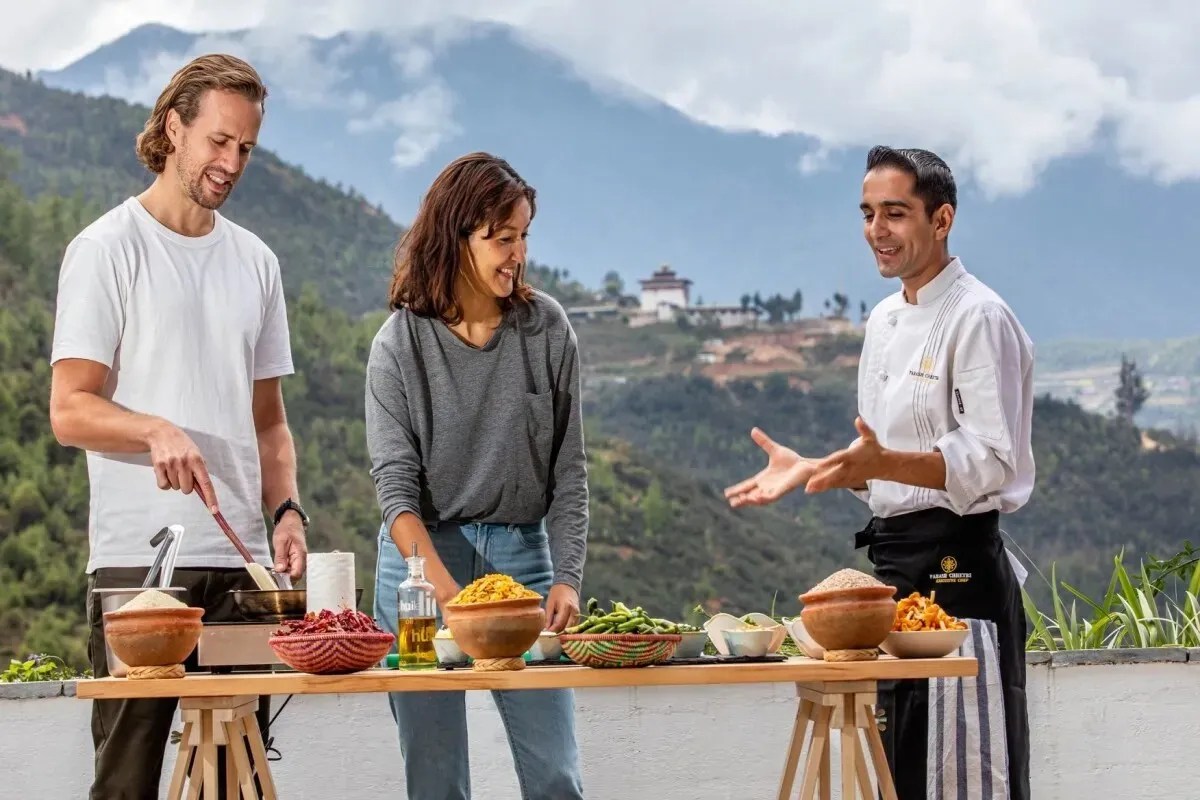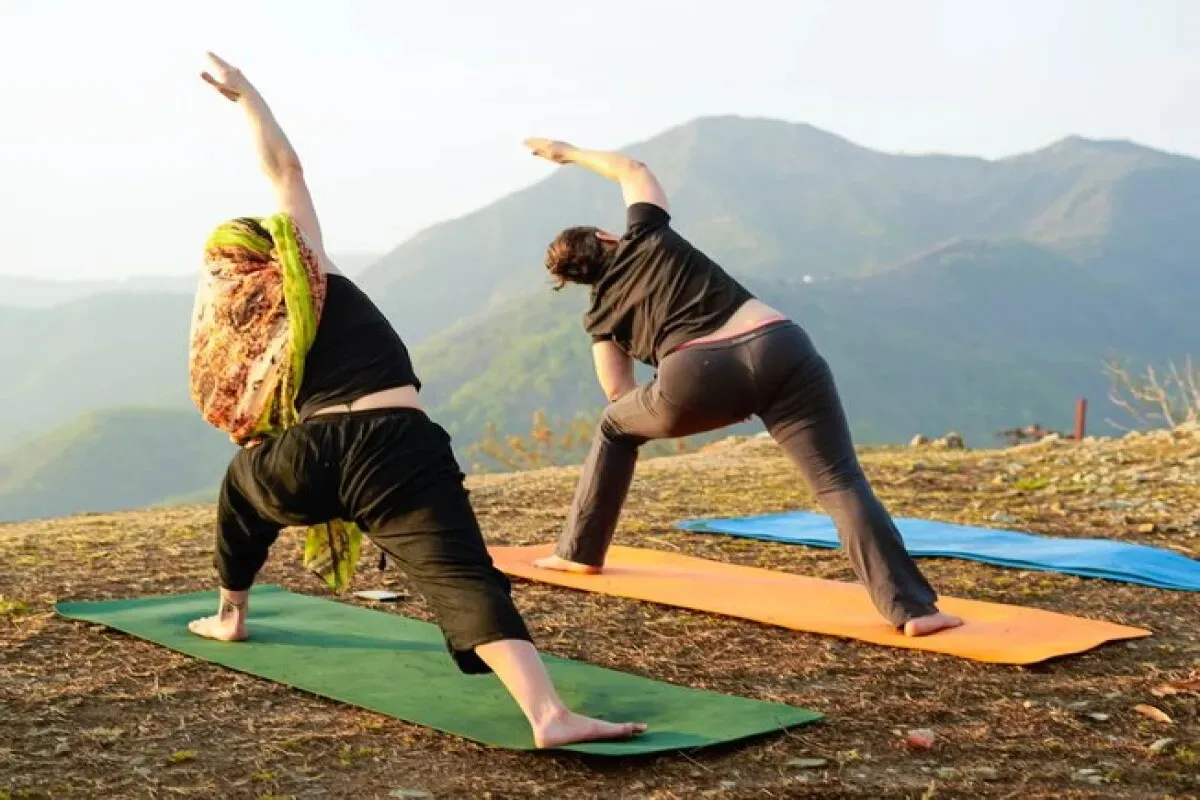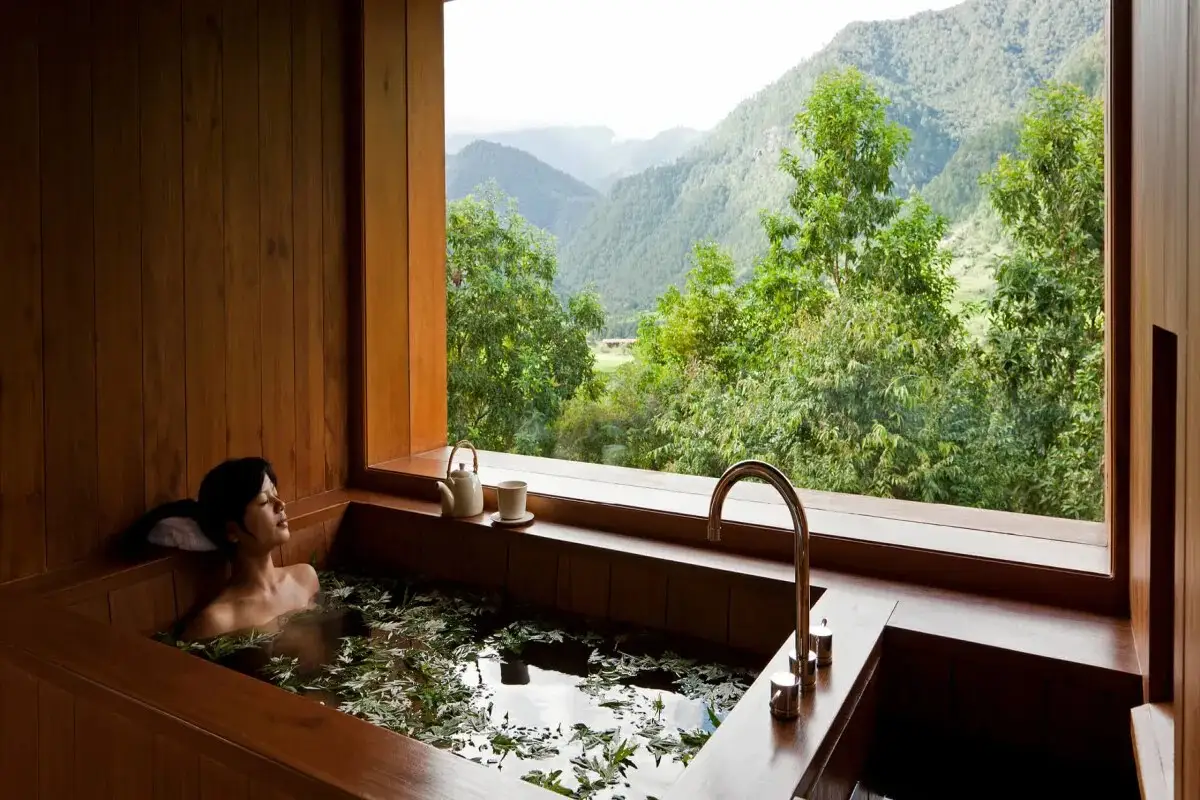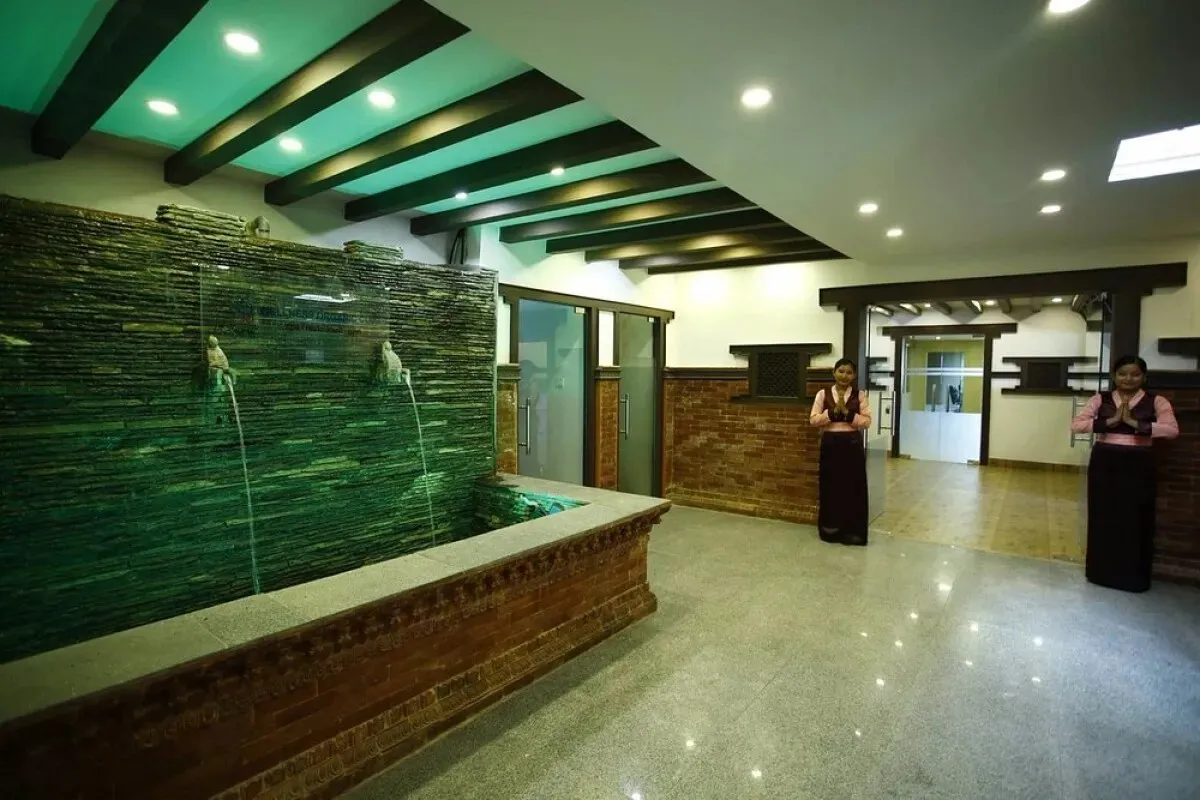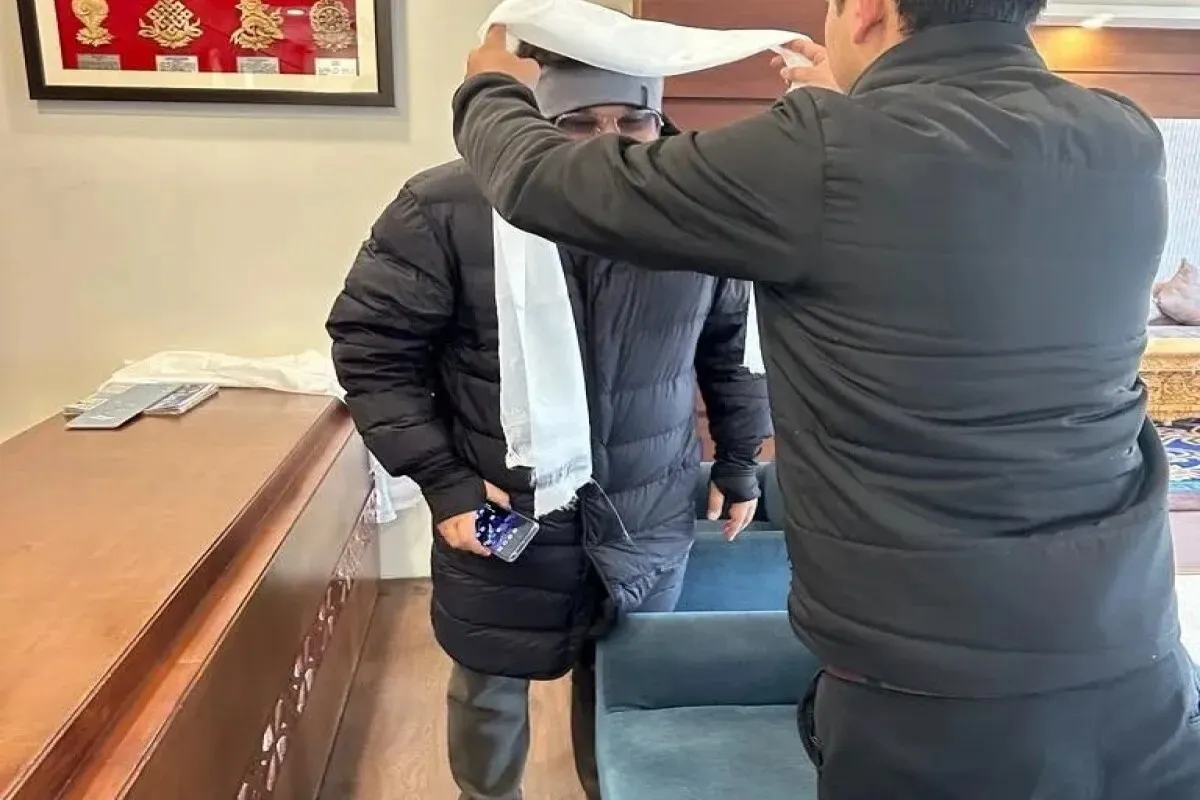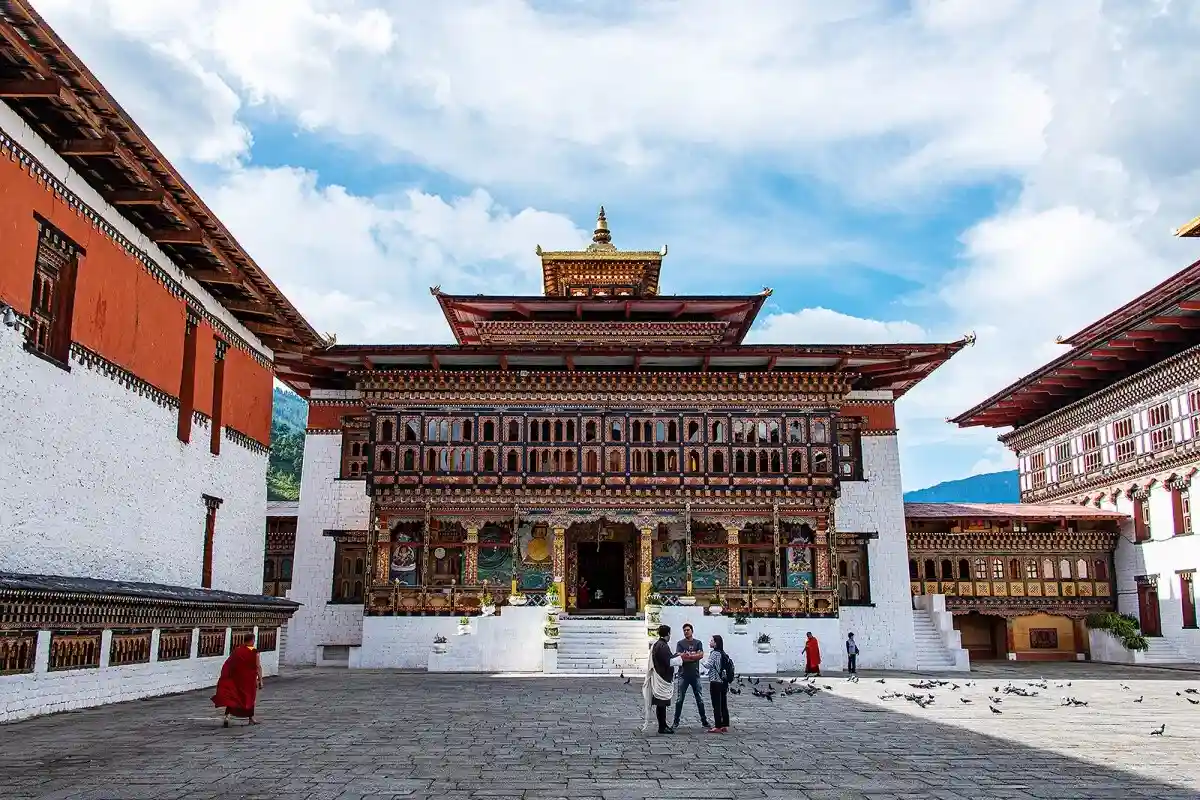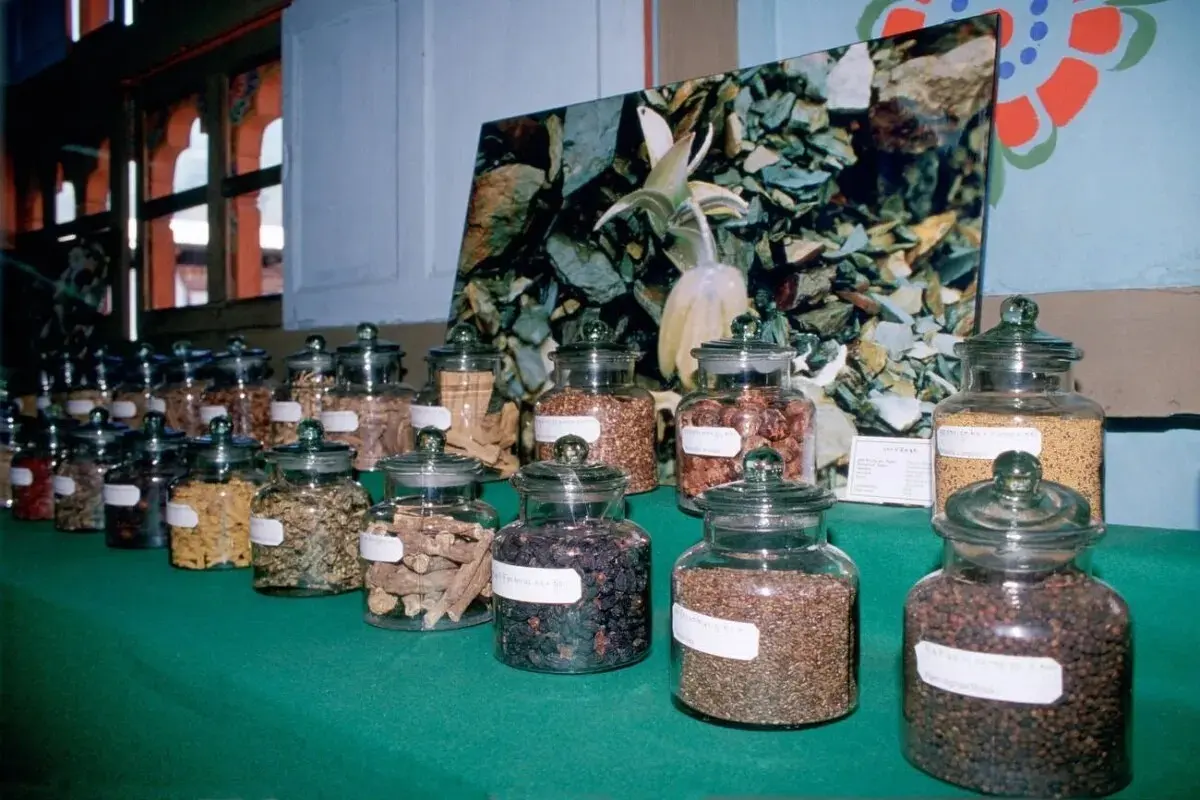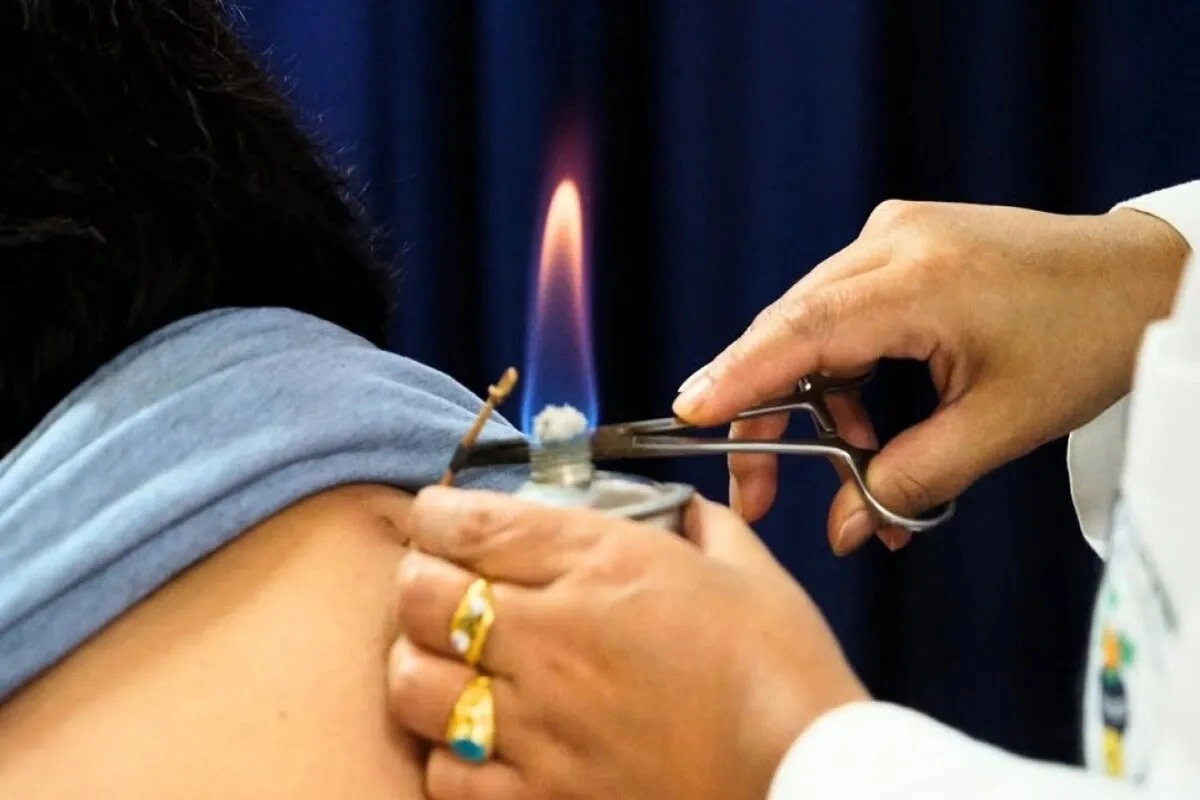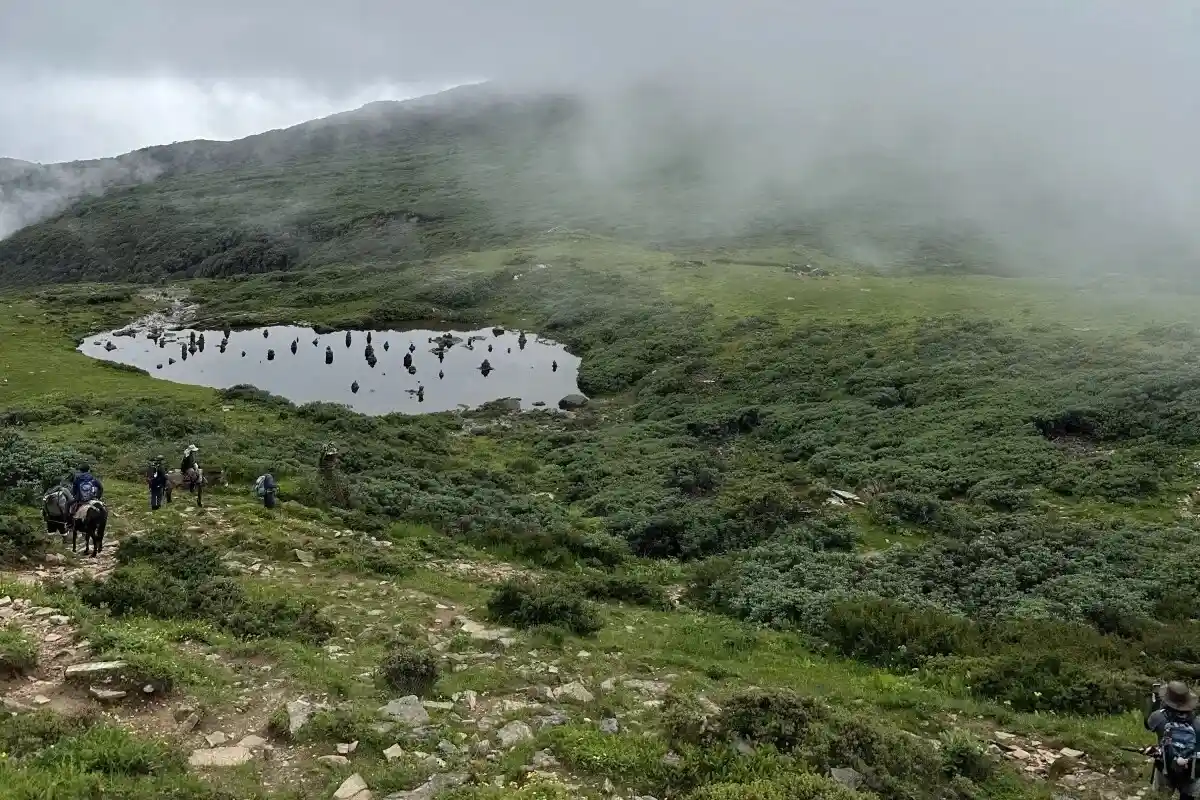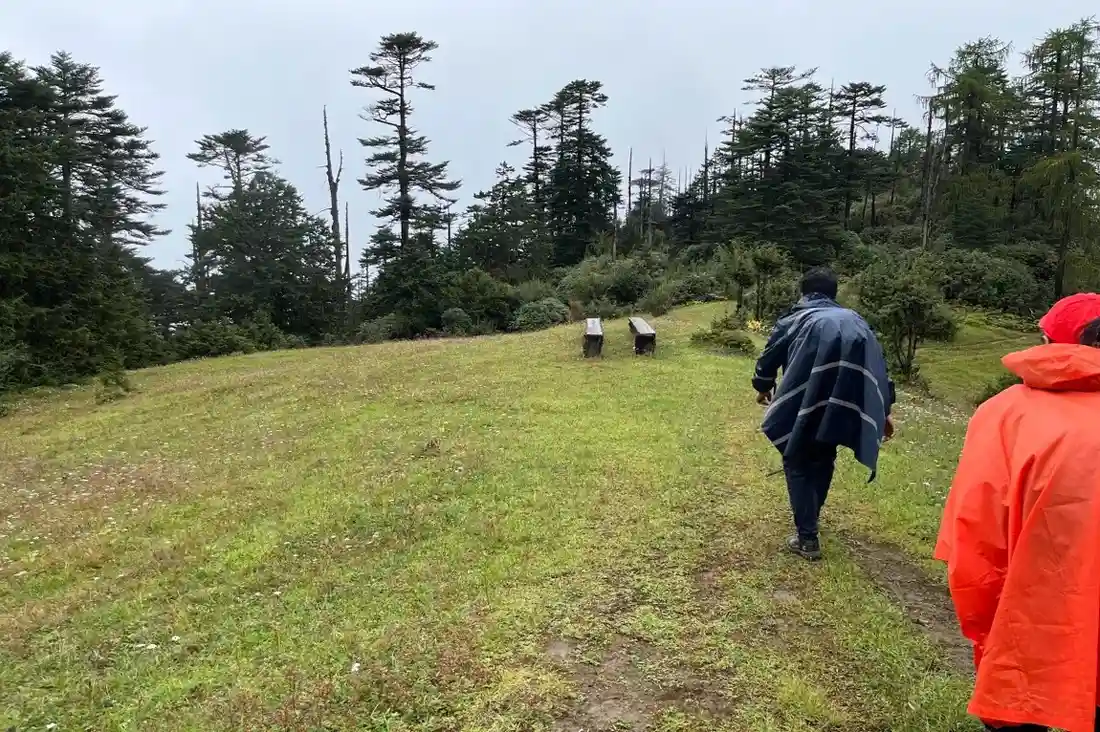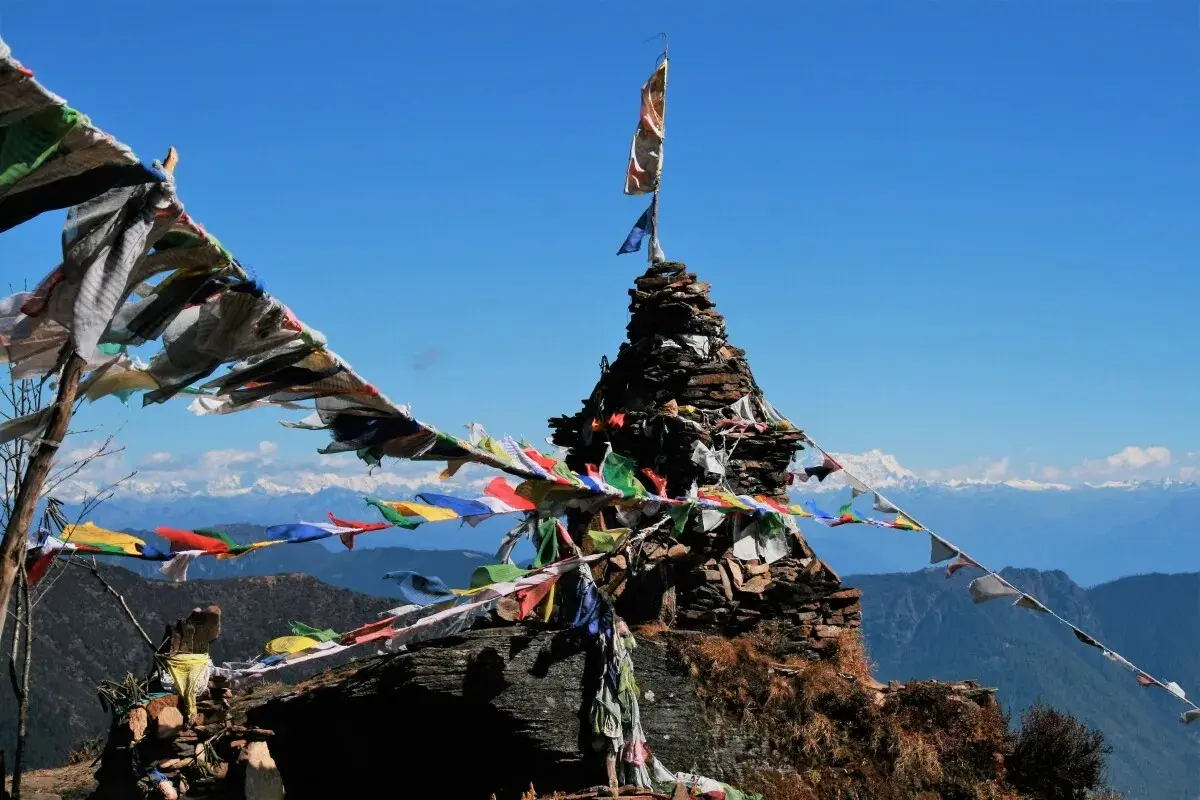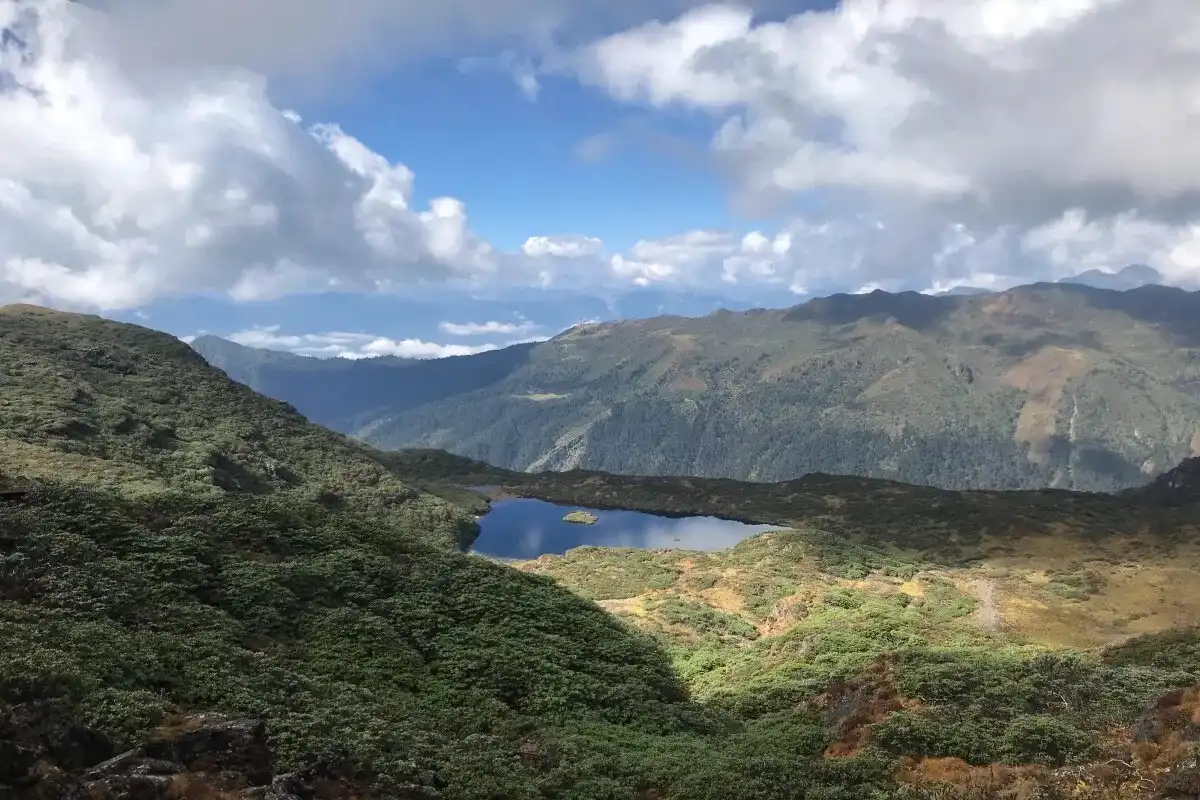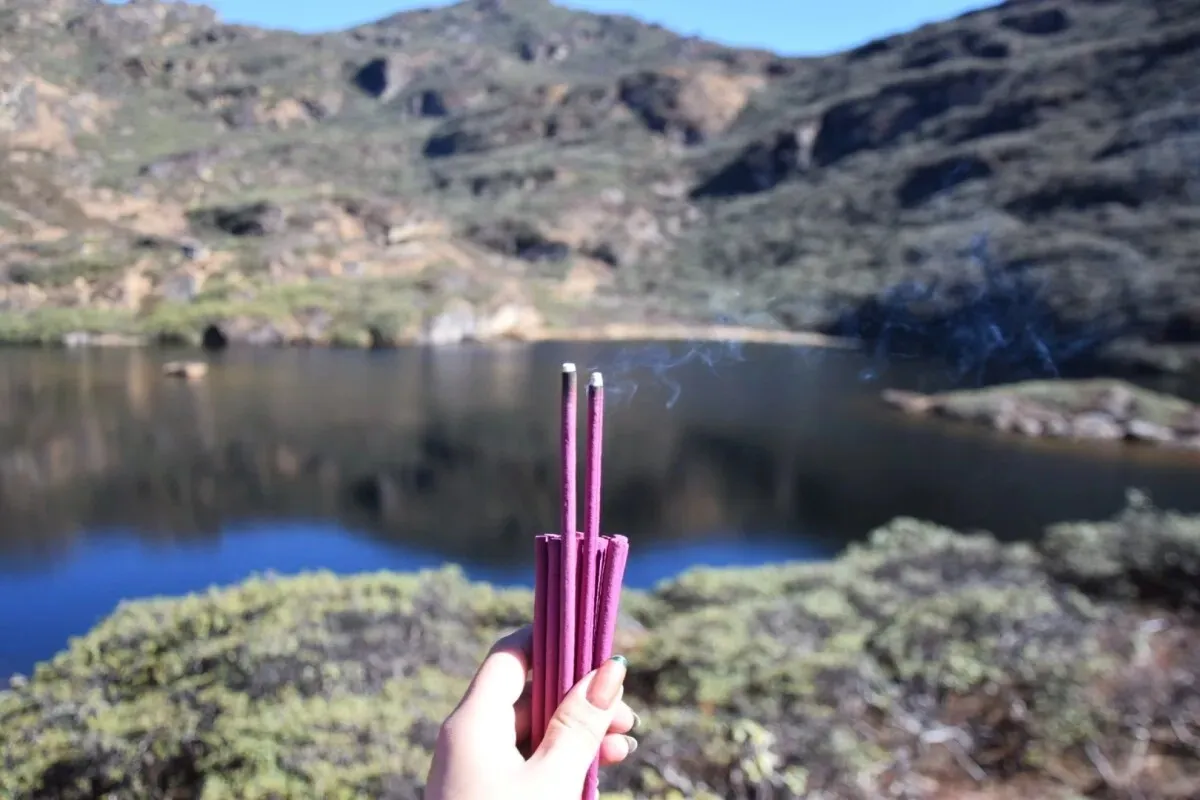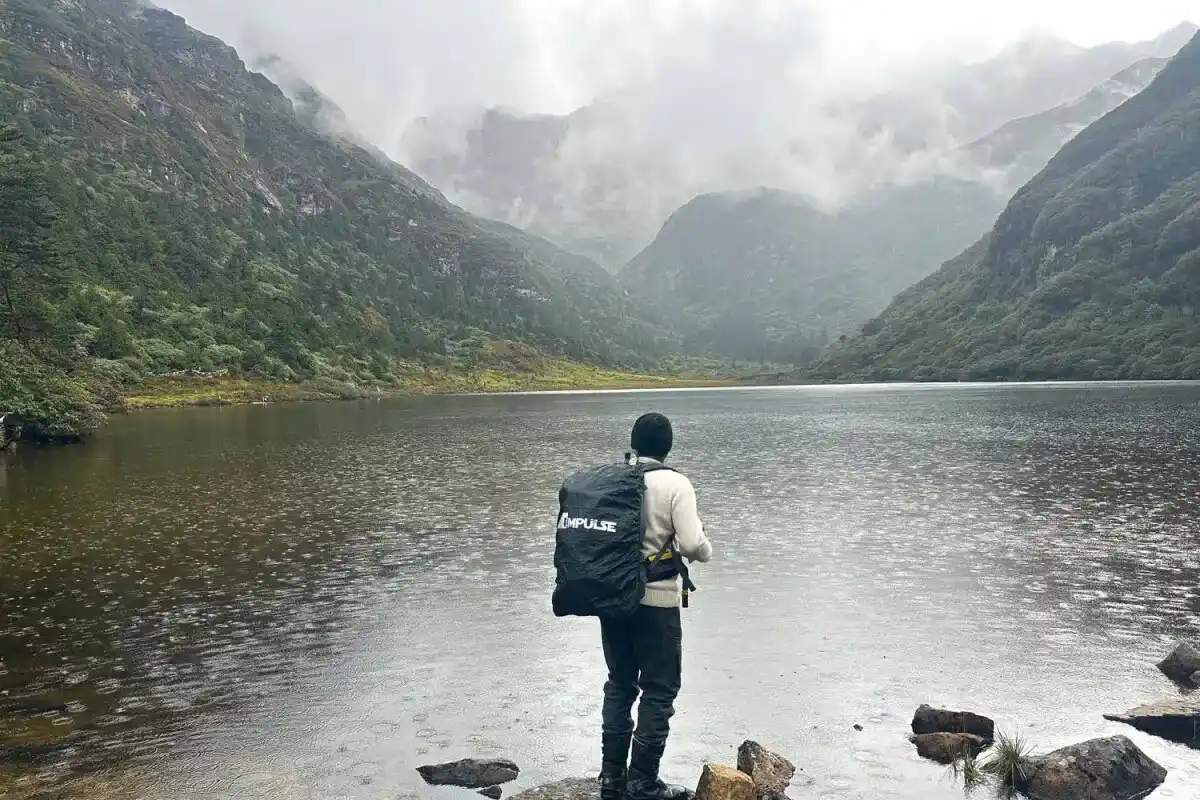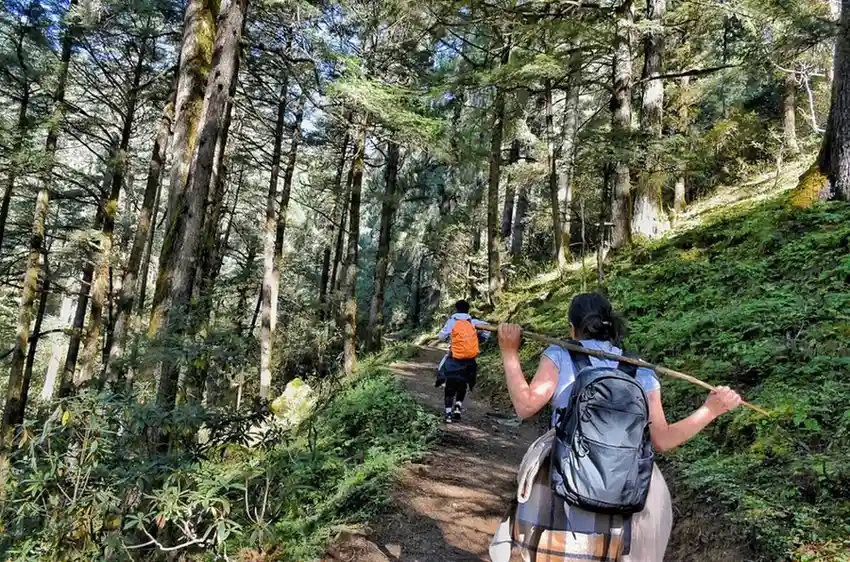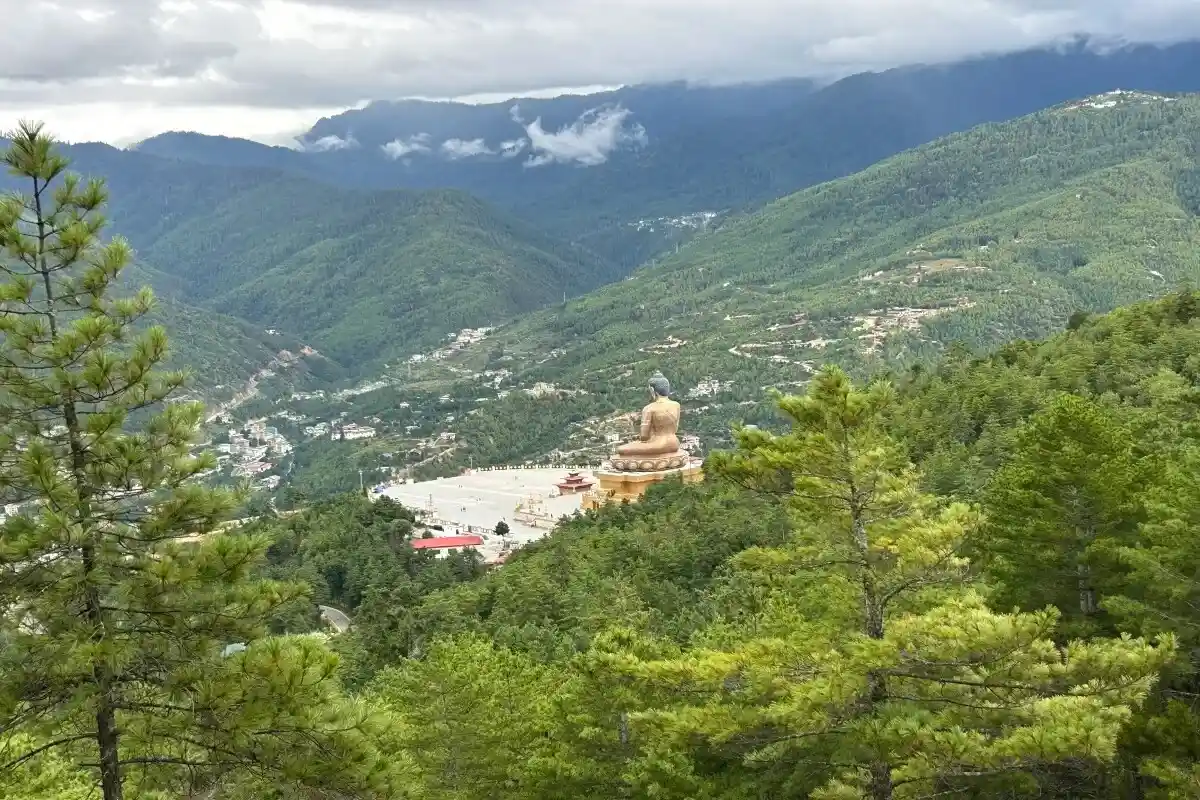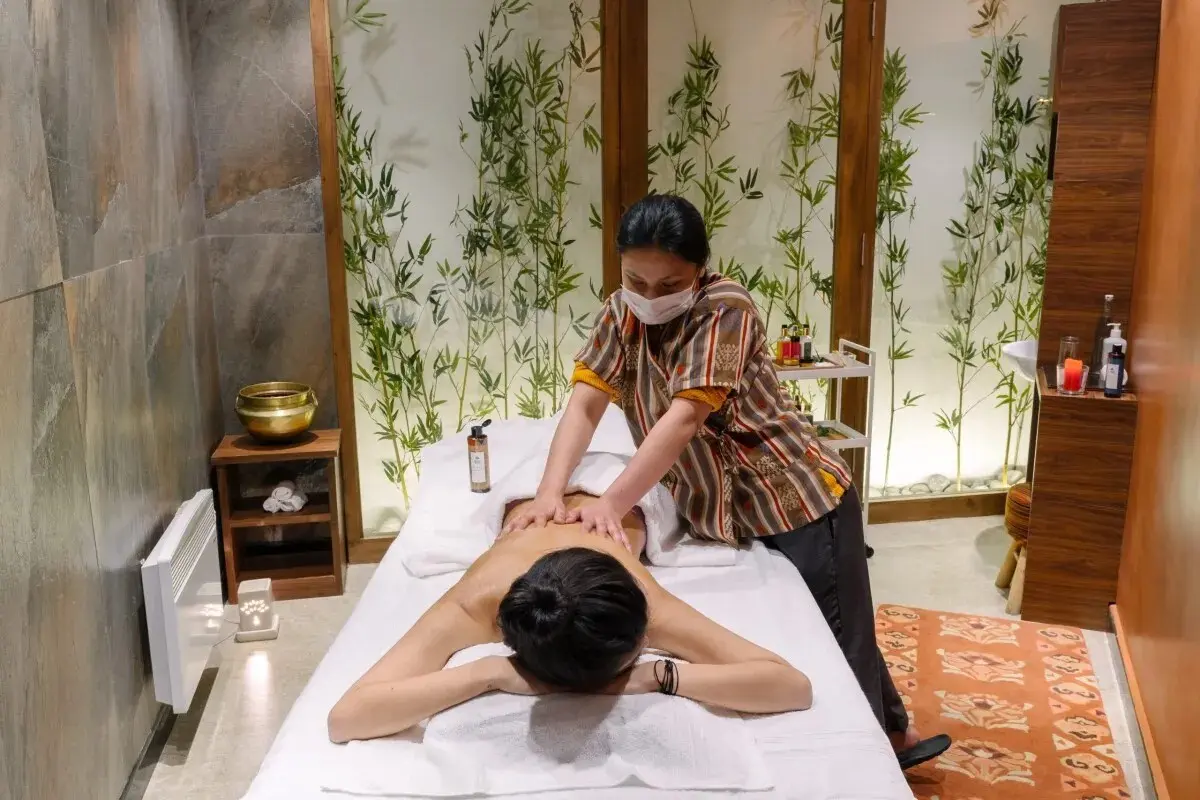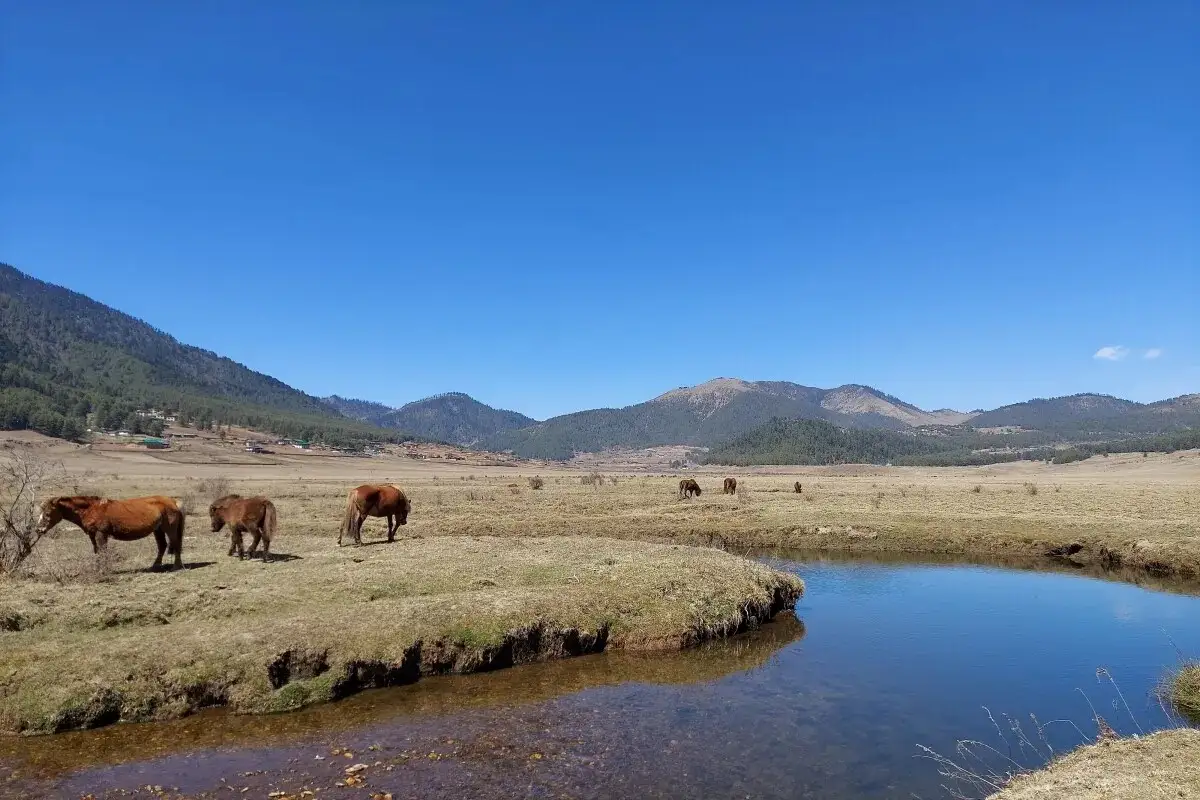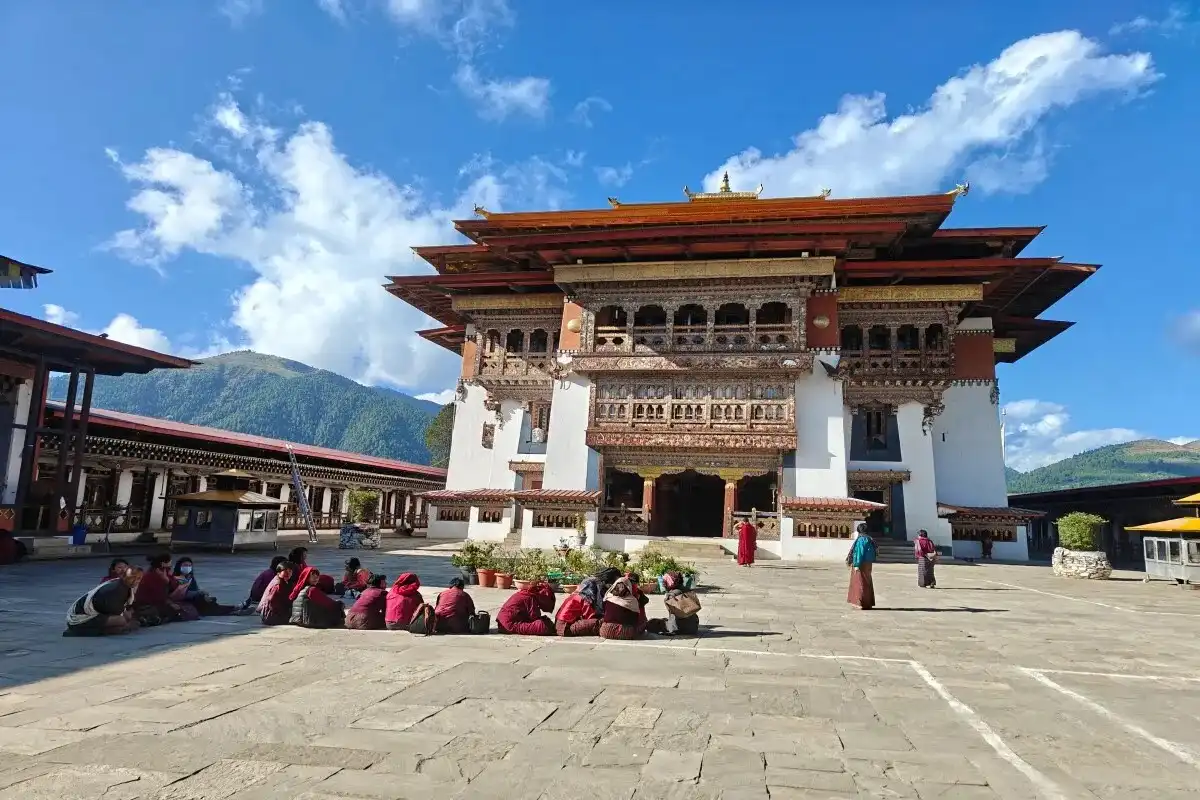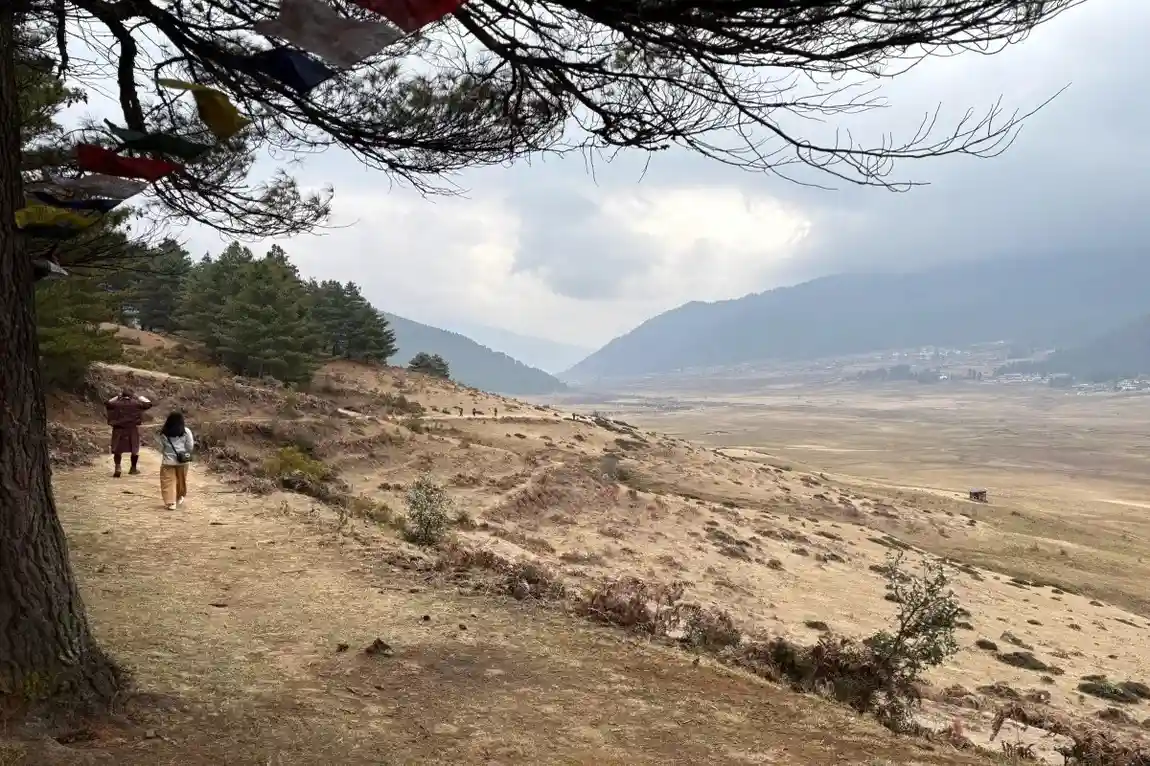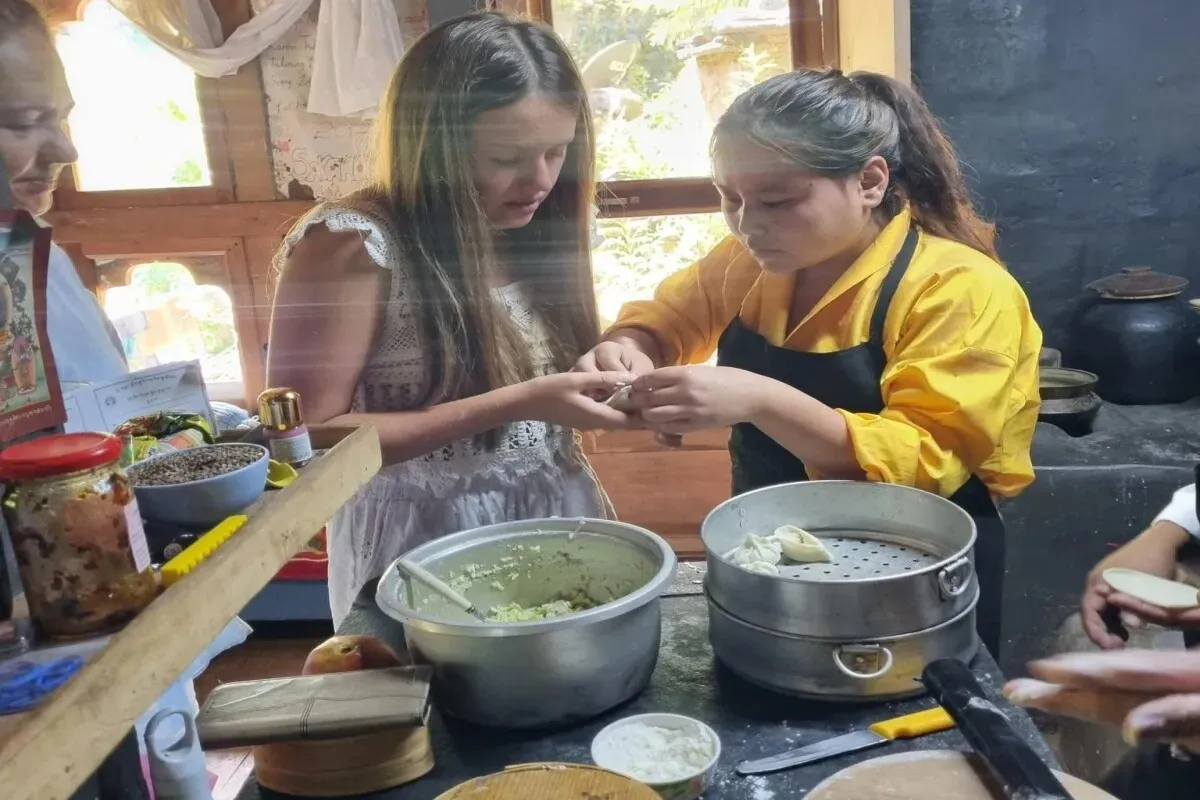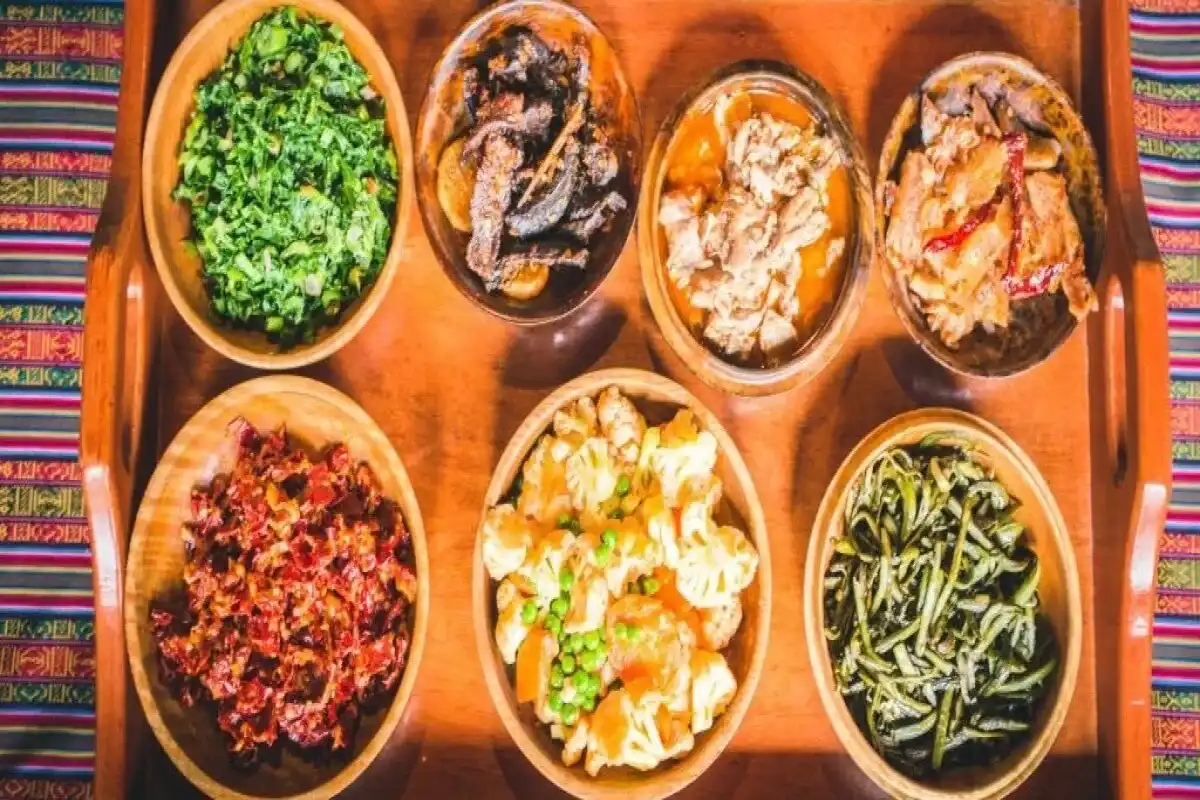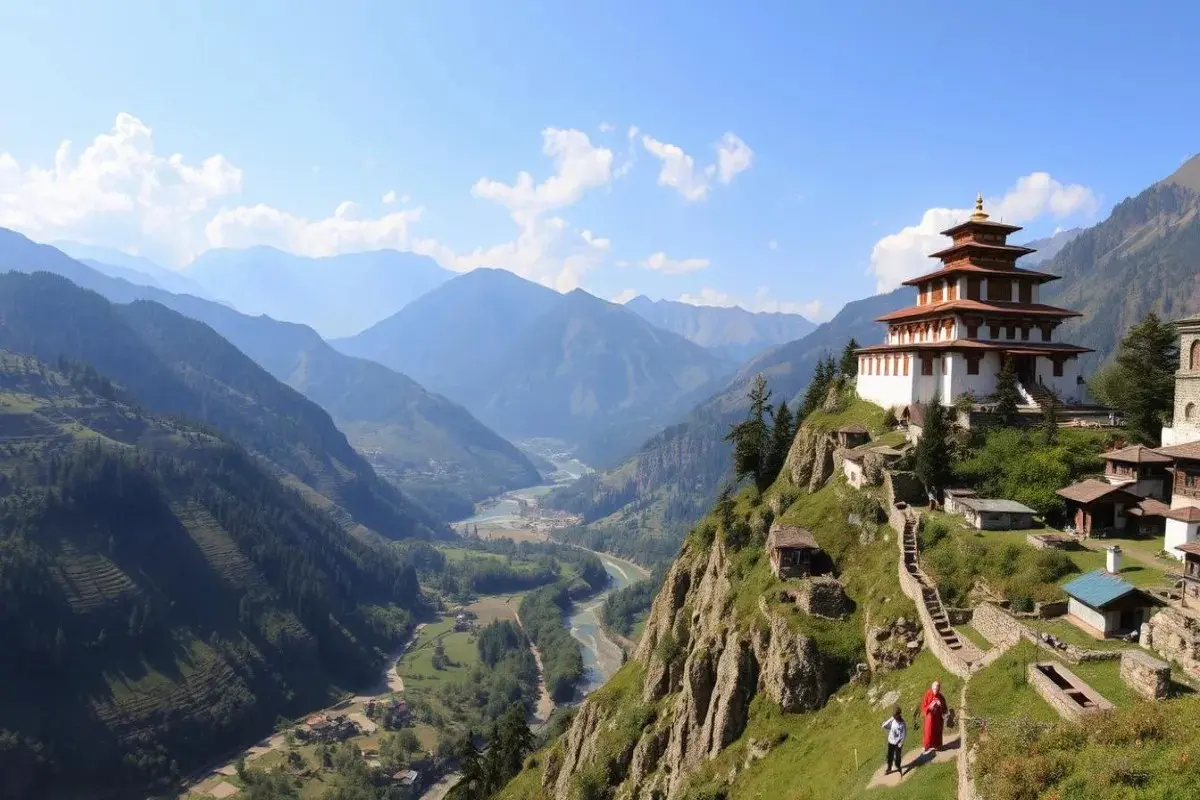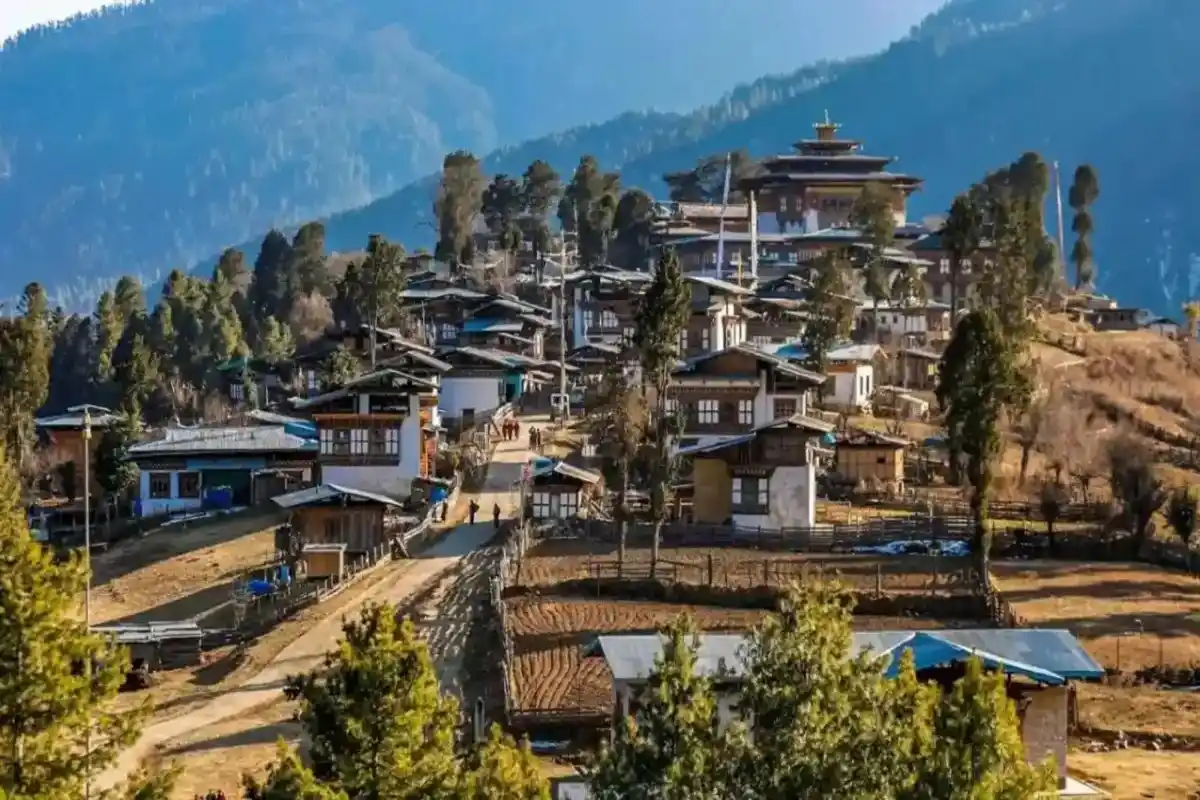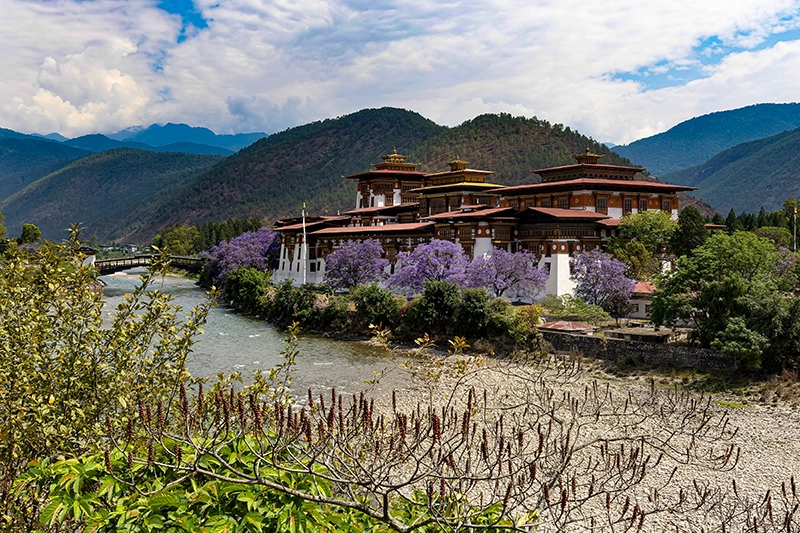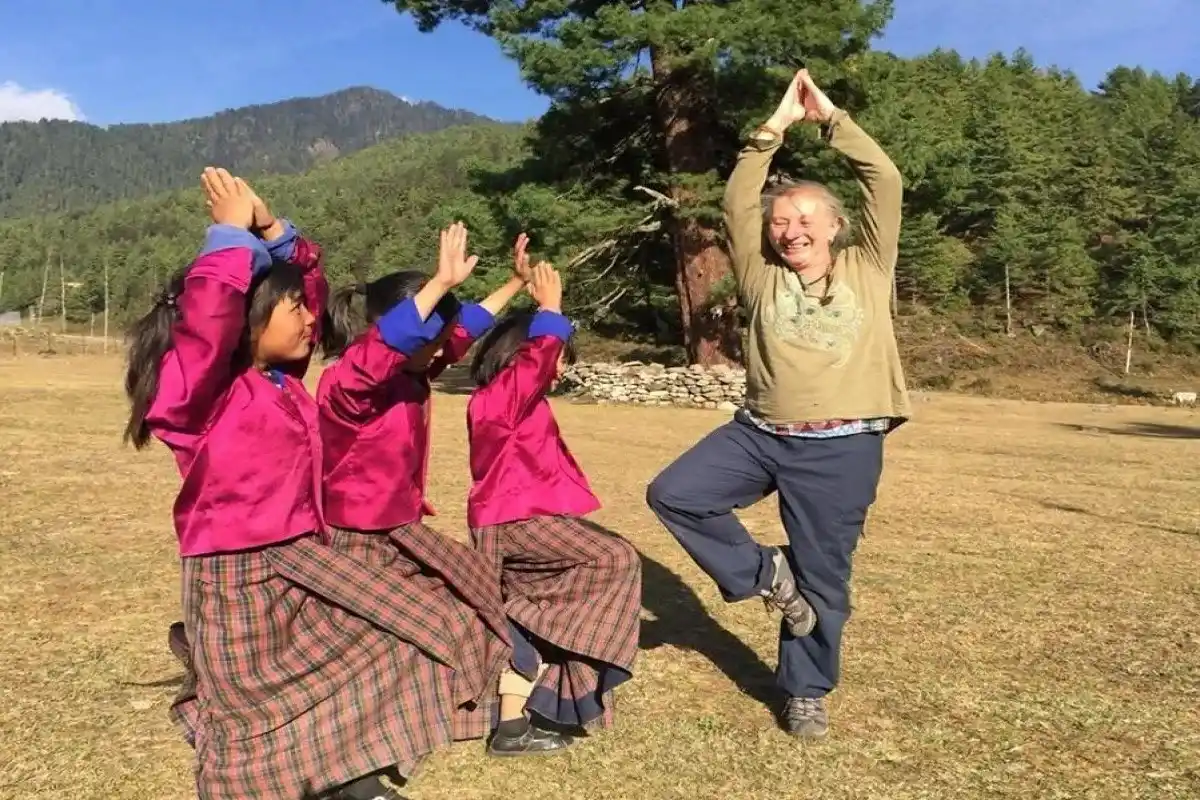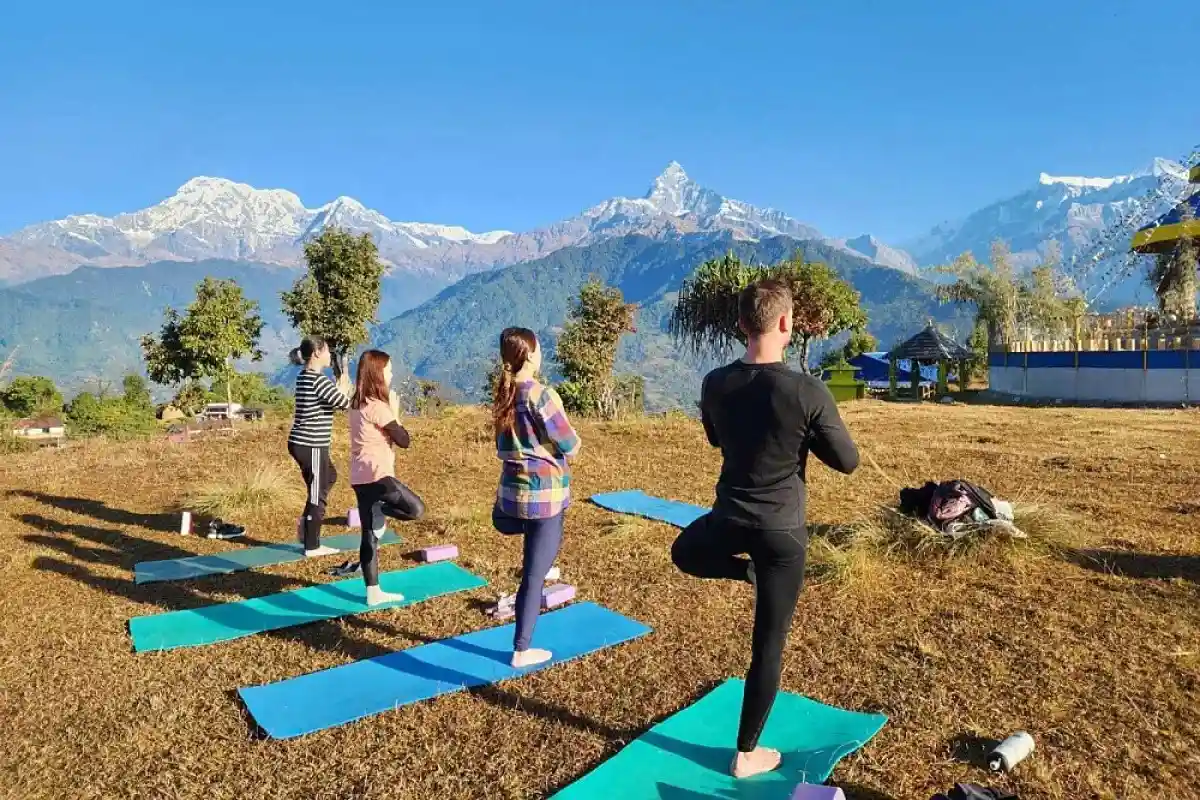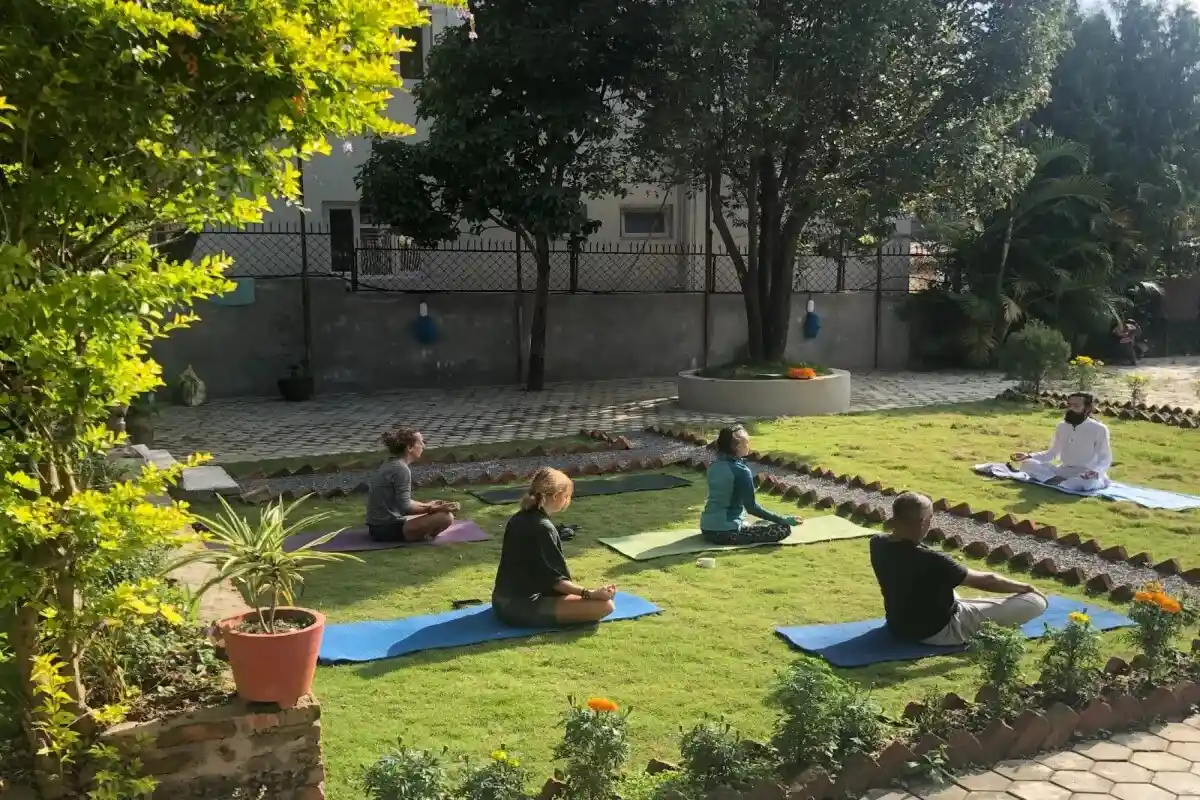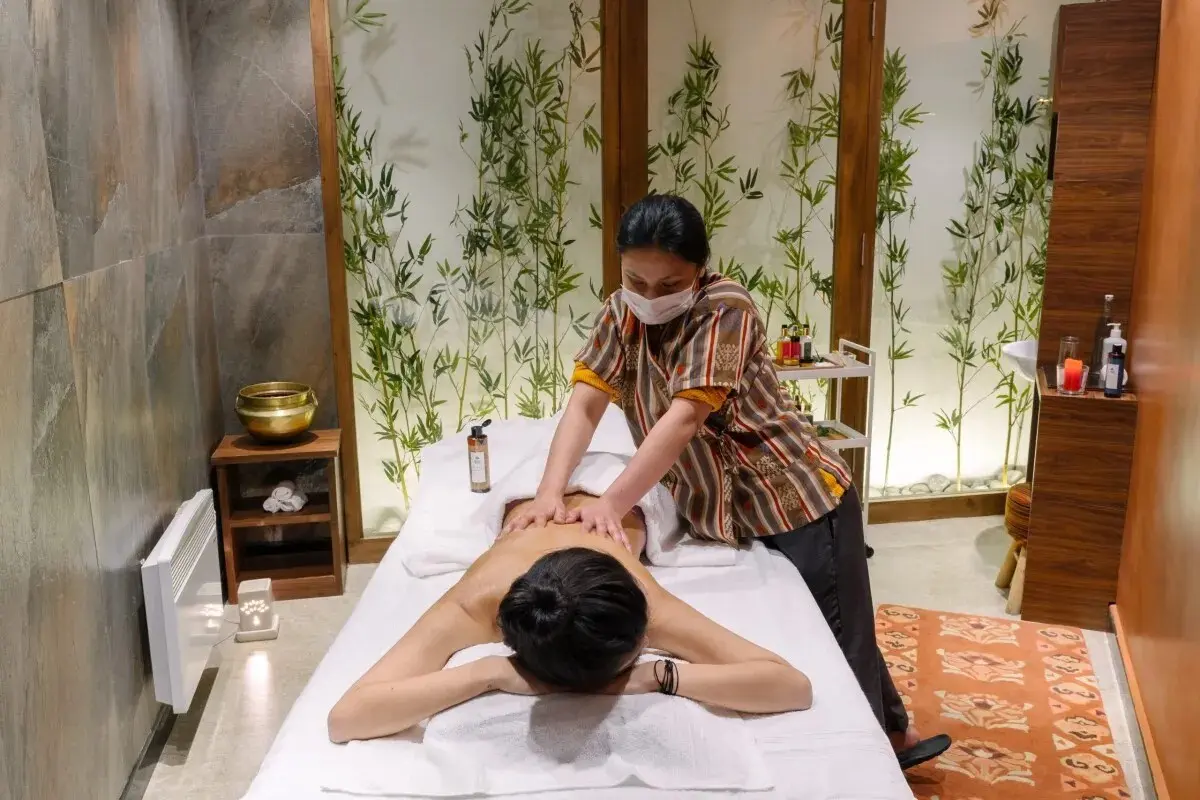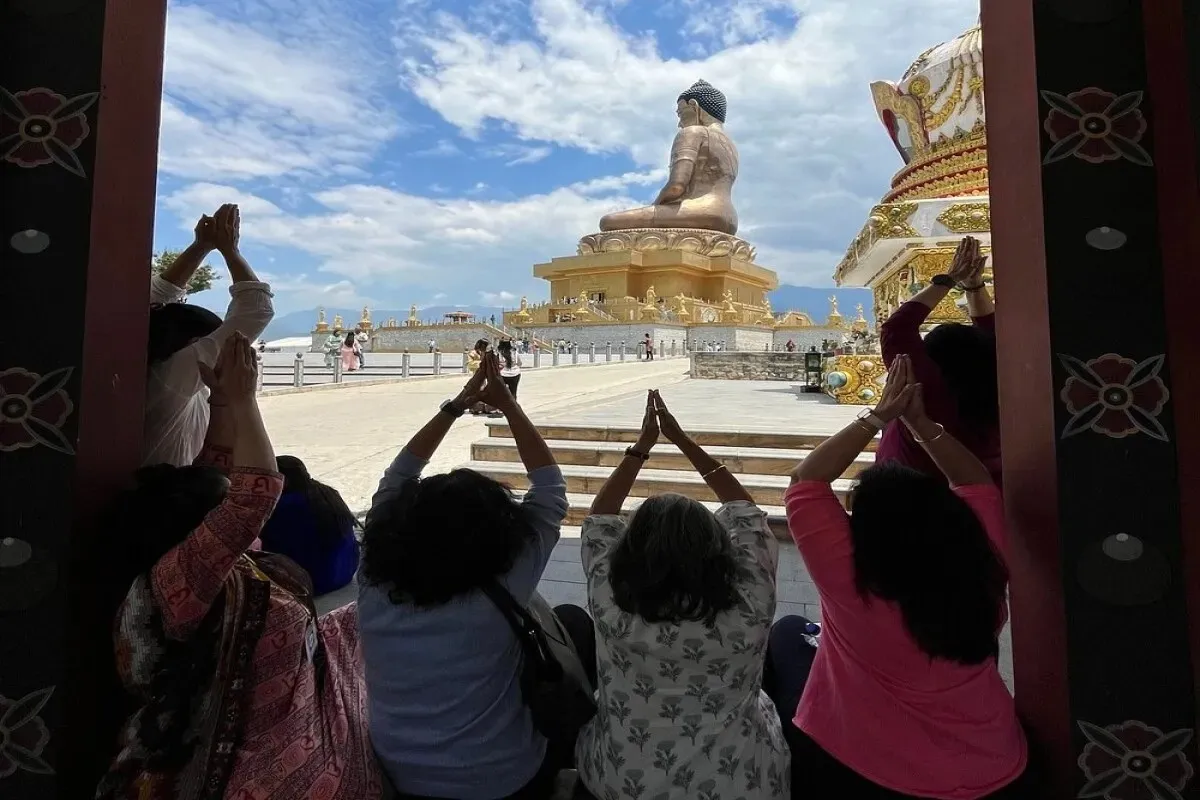Bhutan Active Wellness Immersion Tour - 10 Days
Explore the Bhutanese traditional Hot stone bath, immerse yourself in various wellness hikes, and take part in sound healing, which will assist you in connecting with the present moment.
Highlights
- Experience of Druk Path Trek with mindful practices
- Explore the culture of Bhutan
- Experience a Hot stone bath, massage, and Bhutanese spa treatments
- Experience wellness workshops on local herbs and healing traditions
Trip Overview
If you are looking for cultural and spiritual immersion, inner peace, physical refreshment, and various wellness activities, then the Bhutan Active Wellness Immersion tour will provide you with the best experiences, an ideal mixture of activity and mindfulness, as well as self-discovery. Potential participants are encouraged to get on an adventure with the far-reaching benefits of nourishing the body and soul.
Highlights of the Bhutan Active Wellness Immersion Tour
You'll experience various mindful wellness hiking, sound healing, traditional hot stone bath, Meditation Practices, and visit various ancient and historical sites in the land of Bhutan's adorable beauty.
Experience of Druk Path Trek with mindful practices
Experience the exciting Druk path Trek, the scenic trip between Paro and the capital (Thimphu) through high mountain ranges, clear lakes, and the ancient temples. All these mindfulness routines cause you to become increasingly aware of nature and of yourself; this strengthens as you begin to include daily work on the practices of mindfulness, such as walking meditation, breathwork, and guided reflection. Combining physical exertion with spiritual peace, this hike will become one of the most important steps along your Bhutan wellness hiking trip.
Explore the culture of Bhutan
The spirituality of Bhutan and its attachment to nature are most well posed in the most sacred places in the country, which include the Paro Dzong, the Punakha Dzong, and the Gangtey Monastery. These peaceful places are full of centuries-old practices and offer magnificent views, and give the tourists a chance of experiencing the permanence of peace that Bhutan enjoys. The ability to attend the common ceremonies and talk to the friendly people will help get an insight into the nature of this unique and spiritually-filled land that can hardly be achieved anywhere. Traditional arts and crafts, daily life in the monasteries, whatever you are looking at, this living experience is hard on the heart and soul of the Bhutanese civilization.
Experience a Hot stone bath, massage, and Bhutanese spa treatments
Experience a traditional Hot stone bath, made of river stones that are heated on a fire and added into an infusion of herbs that are meant to help muscles relax and circulation get better. These kinds of activities help you restore your balance and connect with nature. Also participate in massage where they use local oils in and natural way. Boost your wellbeing treatment with the spa services that will include Himalayan herbs, thus you will experience something that is not only rejuvenating but also strongly culturally related.
Visiting iconic sites
Find out Bhutan’s customs and beautiful landscapes through the well-acknowledged dzongs and temples. You will visit Tashichho Dzong in Thimphu, which is the center of political and religious power. Appreciate the contributions of Punakha Dzong on the riverside and get peace at Gangtey Phases, from the Phobjikha Valley. Bhutan presents all its visitors with a unique chance to look at its past through the prism of an amazing landscape.
Experience wellness workshops on local herbs and healing traditions
Progress with your quest towards well-being with the help of dedicated practical workshops exploring the traditional healing modalities of Bhutan. Learn about the herbs, roots, and natural medicines that have always been locally present since the time of the inception of Bhutanese medicine. Under the direction of accomplished healers and wellbeing experts, the participatory experiences offer a subtle introduction to healthy living in the context of total health and traditional medicines, and the spiritual foundations of the Bhutanese mindset of well-being.
Who is this Bhutan Active Wellness Immersion Tour For?
Bhutan Active Wellness Immersion Tour has been designed keeping in mind the fitness enthusiasts, wellness enthusiasts and independent travelers, and active retirees who would like to refresh not only their body but their spirit too. The programme is specifically needed by persons who would like to continue with an intensive exercise programme in the pursuit of a cultural experience. They not only do guided tours in the areas of untouched nature, but also take meditation lessons, are treated with herbs, and receive a hot stone bath. The programme will therefore allow individuals to get in touch with the natural beauty of Bhutan, spiritual traditions that are very colourful, and put the emphasis more on themselves, their health, and well-being. Participants will get inspiration, balance, and restoration moving either singly or in the company of the calming nature of the kingdom.
Benefits of Bhutan Active Wellness Immersion Tour?
The Bhutan Active Wellness Immersion Tour is an adventure, culture, and healing tour all in the same trip. When you visit Bhutan, you will be able to take hikes amidst beautiful scenery, thus strengthening the body and boosting general energy. Meditation and yoga sessions every day will keep one relaxed and clear-headed. We also have the use of traditional herbal medicine and hot-stone baths, which also confirm successful natural healing and relaxation. Bhutan provides a culture-rich environment where you can refresh your mind and bring focused breaths to yourself. Ending the trip, you can probably feel an energizing effect, restoring and motivational force of the Bhutanese cocktail of health, spirituality, and psychedelic beauty.
Natural healing: herbs and hot stone therapy in Bhutan Active Wellness Immersion
In Bhutan, natural healing is based on long-standing traditions. Two major elements in it are herbs and hot stone therapy. The medical herbs employed by local healers are consumed in the form of teas, oils, and other treatments to restore an individual's energy balance and overall health. Hot stone therapy (known as dotsho) takes place in heated water by roasting river stones and then heating the water using the heated stones. The stones emit minerals and heat that relax tensed muscles and increase the blood flow, and detoxify it. This health and wellness practice takes a central role in the active wellness tours in Bhutan, a game-changer in healing, and an ancient tradition.
Conclusion
Bhutan Active Wellness Immersion Tour is not just another travel. It gives the involved individuals the chance to slow down, focus on the breathing pattern, and regain a relationship with their inner self. Whether it is meditation in yoga, relaxation, hot stone baths, or picture-perfect alpine hikes, all the experiences welcome the pursuit of balance and peace. At the same time, you will learn all about the rich culture and ancient wellness habits of Bhutan, in realizing how our ability to heal and create connections with nature and mindfulness support our bodies and minds. At the end of the travel, rested, rooted, and intellectually stimulated, travelers leave with a longer-lasting feeling of calm that lasts long after the journey. This trip is an outstanding experience that encompasses all the levels of the participant.
If you are looking for cultural and spiritual immersion, inner peace, physical refreshment, and various wellness activities, then the Bhutan Active Wellness Immersion tour will provide you with the best experiences, an ideal mixture of activity and mindfulness, as well as self-discovery. Potential participants are encouraged to get on an adventure with the far-reaching benefits of nourishing the body and soul.
Highlights of the Bhutan Active Wellness Immersion Tour
You'll experience various mindful wellness hiking, sound healing, traditional hot stone bath, Meditation Practices, and visit various ancient and historical sites in the land of Bhutan's adorable beauty.
Experience of Druk Path Trek with mindful practices
Experience the exciting Druk path Trek, the scenic trip between Paro and the capital (Thimphu) through high mountain ranges, clear lakes, and the ancient temples. All these mindfulness routines cause you to become increasingly aware of nature and of yourself; this strengthens as you begin to include daily work on the practices of mindfulness, such as walking meditation, breathwork, and guided reflection. Combining physical exertion with spiritual peace, this hike will become one of the most important steps along your Bhutan wellness hiking trip.
Explore the culture of Bhutan
The spirituality of Bhutan and its attachment to nature are most well posed in the most sacred places in the country, which include the Paro Dzong, the Punakha Dzong, and the Gangtey Monastery. These peaceful places are full of centuries-old practices and offer magnificent views, and give the tourists a chance of experiencing the permanence of peace that Bhutan enjoys. The ability to attend the common ceremonies and talk to the friendly people will help get an insight into the nature of this unique and spiritually-filled land that can hardly be achieved anywhere. Traditional arts and crafts, daily life in the monasteries, whatever you are looking at, this living experience is hard on the heart and soul of the Bhutanese civilization.
Experience a Hot stone bath, massage, and Bhutanese spa treatments
Experience a traditional Hot stone bath, made of river stones that are heated on a fire and added into an infusion of herbs that are meant to help muscles relax and circulation get better. These kinds of activities help you restore your balance and connect with nature. Also participate in massage where they use local oils in and natural way. Boost your wellbeing treatment with the spa services that will include Himalayan herbs, thus you will experience something that is not only rejuvenating but also strongly culturally related.
Visiting iconic sites
Find out Bhutan’s customs and beautiful landscapes through the well-acknowledged dzongs and temples. You will visit Tashichho Dzong in Thimphu, which is the center of political and religious power. Appreciate the contributions of Punakha Dzong on the riverside and get peace at Gangtey Phases, from the Phobjikha Valley. Bhutan presents all its visitors with a unique chance to look at its past through the prism of an amazing landscape.
Experience wellness workshops on local herbs and healing traditions
Progress with your quest towards well-being with the help of dedicated practical workshops exploring the traditional healing modalities of Bhutan. Learn about the herbs, roots, and natural medicines that have always been locally present since the time of the inception of Bhutanese medicine. Under the direction of accomplished healers and wellbeing experts, the participatory experiences offer a subtle introduction to healthy living in the context of total health and traditional medicines, and the spiritual foundations of the Bhutanese mindset of well-being.
Who is this Bhutan Active Wellness Immersion Tour For?
Bhutan Active Wellness Immersion Tour has been designed keeping in mind the fitness enthusiasts, wellness enthusiasts and independent travelers, and active retirees who would like to refresh not only their body but their spirit too. The programme is specifically needed by persons who would like to continue with an intensive exercise programme in the pursuit of a cultural experience. They not only do guided tours in the areas of untouched nature, but also take meditation lessons, are treated with herbs, and receive a hot stone bath. The programme will therefore allow individuals to get in touch with the natural beauty of Bhutan, spiritual traditions that are very colourful, and put the emphasis more on themselves, their health, and well-being. Participants will get inspiration, balance, and restoration moving either singly or in the company of the calming nature of the kingdom.
Benefits of Bhutan Active Wellness Immersion Tour?
The Bhutan Active Wellness Immersion Tour is an adventure, culture, and healing tour all in the same trip. When you visit Bhutan, you will be able to take hikes amidst beautiful scenery, thus strengthening the body and boosting general energy. Meditation and yoga sessions every day will keep one relaxed and clear-headed. We also have the use of traditional herbal medicine and hot-stone baths, which also confirm successful natural healing and relaxation. Bhutan provides a culture-rich environment where you can refresh your mind and bring focused breaths to yourself. Ending the trip, you can probably feel an energizing effect, restoring and motivational force of the Bhutanese cocktail of health, spirituality, and psychedelic beauty.
Natural healing: herbs and hot stone therapy in Bhutan Active Wellness Immersion
In Bhutan, natural healing is based on long-standing traditions. Two major elements in it are herbs and hot stone therapy. The medical herbs employed by local healers are consumed in the form of teas, oils, and other treatments to restore an individual's energy balance and overall health. Hot stone therapy (known as dotsho) takes place in heated water by roasting river stones and then heating the water using the heated stones. The stones emit minerals and heat that relax tensed muscles and increase the blood flow, and detoxify it. This health and wellness practice takes a central role in the active wellness tours in Bhutan, a game-changer in healing, and an ancient tradition.
Conclusion
Bhutan Active Wellness Immersion Tour is not just another travel. It gives the involved individuals the chance to slow down, focus on the breathing pattern, and regain a relationship with their inner self. Whether it is meditation in yoga, relaxation, hot stone baths, or picture-perfect alpine hikes, all the experiences welcome the pursuit of balance and peace. At the same time, you will learn all about the rich culture and ancient wellness habits of Bhutan, in realizing how our ability to heal and create connections with nature and mindfulness support our bodies and minds. At the end of the travel, rested, rooted, and intellectually stimulated, travelers leave with a longer-lasting feeling of calm that lasts long after the journey. This trip is an outstanding experience that encompasses all the levels of the participant.
Short Itinerary
Arrive in Paro, visit Paro Dzong and enjoy a welcome dinner with Bhutanese cuisine
Drive to Thimphu, visit Tashichho Dzong and attend a Bhutanese herbal wellness workshop
Begin Druk Path Trek, hike to Jele Dzong and overnight camp
Trek through rhododendron groves to Jangchulakha and enjoy nature meditation
Trek to Simkotra Tsho Lake, silent lakeside meditation at 4,130m
Final trek to Thimphu, enjoy hot stone bath and spa relaxation
Drive to Phobjikha Valley, visit Gangtey Monastery and walk the Nature Trail
Participate in a Bhutanese cooking class and enjoy light yoga and wellness
Visit Punakha Dzong, stroll through valley, return to Thimphu and end with evening
Leisure morning, transfer to Paro for departure with farewell from your guide
Bhutan Active Wellness Immersion Tour Itinerary
The first day begins after you arrive at Paro International Airport, where your guide is ready to welcome you. Now, move along with your guide to your respective hotel and check in there. After taking a light meal, visit to explore Paro Dzong, which is known as the fortress monastery, reflecting the stunning view of traditional architecture and culture of Bhutan. The culture of travel to Bhutan is to experience many things, see people, and exchange experiences. In the afternoon, have a stroll around the town of Paro, rest, and enjoy a relaxing mood and the beautiful views. Join an evening welcome dinner with Bhutanese cuisine and get acquainted with the culture, customs, and well-being traditions. This food will provide you with an introduction to the rest of the trip.
After breakfast, you will take a short drive. The road crosses through the green valleys, farmland, and the villages and arrives at Thimphu which is the capital city of Bhutan. Check in at your hotel and sleep comfortably. Then visit Tashichho Dzong. In the afternoon, you can enjoy its striking architecture and well-planned gardens. Following it, you will participate in a practical workshop that introduces Bhutanese herbs and natural medicine. Find out about native medicinal plants grown locally, their folk uses, and the way they have been incorporated into holistic health. This is an enriching experience that will be a starting position for your wellness experience of integrating ancient Bhutanese healing knowledge with a calm atmosphere.
Begin your morning in Bhutan with comfortable morning yoga and breathing exercises accompanied by the fresh air of the Paro mountains. Fresh, start on the Druk Path trail passing through pine forests, flower meadows, and quiet ridges along the hillside. Enjoy the calm landscape and sometimes the vista of far-off Himalayan mountains. The path slowly gets you to Jele Dzong at 3,450 meters. This long yet historic monastery has grand views of the valley below the Paro Valley. You put up your tent, have a cup of herbal tea, and get inside your sleeping bag under the silent mountain skies.
You will begin your morning hours by hearing the nature sounds. Practice yoga under the free sky with tall pines and fill your lungs with pure air. The next part of the route is the extension of Druk Path with the walk through quiet groves of rhododendrons and wide ridges, where beautiful valleys can be viewed. This trek is quiet and allows you to think internally, and you have an opportunity to enjoy the wild beauty of Bhutan. As you are walking, wild herbs and yak bells (sometimes) create a peaceful atmosphere. In the afternoon, you will come to the Jangchulakha, which is a large open meadow, on which yaks frequently graze. Make yourself comfortable in your camp, get yourself some warm herbal tea, and rest as the sun is going down behind the mountains.
Wake up early, go out for some walking, and have a filling breakfast. This is now the time to go on a good walk to Simkotra Tsho, one of the quiet and high-altitude lakes in Bhutan. Climb past rocky crags and wide, open spaces. You will see clear views of the Himalaya range. Walk slowly uphill. The air feels fresh, and the path is quiet. Take your time. Think about what is happening inside you. Around 2 p.m., you reach Simkotra Tsho. It is the blue-coloured lake with a calmness and an altitude of 4,130 meters. There, your guide will demonstrate to you how to sit on the edge of the ground by the water, and think through a silent meditation. Let the calmness and the beauty help you concentrate more on yourself and nature. After dinner, look up at the sky. The stars shine brightly. Feel the quietness and absorb the spirituality of this religious sanctuary.
On the final trekking day, you will pass through the populations of pine forests and the peaceful valleys. You get a glimpse of the capital of Bhutan, Thimphu, occasionally. Once you arrive, check in into your hotel and rest. To get a good night's sleep, have a hot stone bath in the afternoon, which is a classical Bhutanese technique of taking a soak in mineral water that has been heated by specially roasted stones to ease the tired muscles. Complement it with a well-deserved spa treatment for the body and mind. In the afternoon, take a stroll down the picturesque streets of Thimphu, get to know local markets, cafes, and some local peculiarities of combining traditions and modern life.
A scenic excursion to Phobjikha valley will offer you a chance to cross through a landscape that is famously known as one of the most beautiful and serene landscapes in Bhutan. The fancy of wavy hills and broad farming lands cradles the valley, unveiling a near sensuality where time stands still in a distant echo of the bustle in daily life. Begin your tour with Gangtey Monastery, which is situated on a hilltop. Feel the quiet beat of monastic tempo and appreciate the sight. Next, walk the Gangtey Nature Trail. The trail winds in and out of forests, in and around villages, and across open fields. FreezeFrame and meditate on small, simple meditations, being calm as the quietness around valleys. This day is a deep breath and like fresh air because of the green sounds of nature and wide-open spaces.
Today will ask you to take a step backward and to experience the pleasant aspects of the life of the Bhutanese. Begin with a hot cooking course with a local chef. You will be taught how to make healthy Bhutanese meals using fresh ingredients depending on the season. You will come to realize how Bhutanese food makes a connection between food and health as you trim, mix, and sample foods. Then, there is the afternoon session of light yoga and wellness after enjoying the food you prepared earlier. Your body is calming down, and your mind is relaxed with relaxing stretching and conscious breathing. It is a sweet day, which is a merge of food, culture, and inner peace into the warm heart of Bhutan.
Know Before You Travel
-
Places to visit during the trip:
In Bhutan, a lot of importance is given to natural healing as it forms part of the wellness practices of the country. The conventional administration consists of the native herbs and the ancient method of hot stone therapy or commonly known as Dotsho treatment. Medicinal herbs are harvested in the Himalayas, and they are used in remedial preparations that deal with a wide range of conditions and are aimed at recreating the balance in the body. Hot stone therapy, on the other hand, is the immersion in a wooden tub heated with stones that have been baked in a conventional ceramic oven. The stated practice is usually described as an experience that reduces the pain in muscles, increases their circulation, and produces peak relaxation, thus becoming one of the unique features of the Active Wellness Immersion Tour.
FAQs for Bhutan Active Wellness Immersion Tour
No, we have designed the yoga classes that are suitable for both beginners and professionals. The guide will help you through all the practices, and there will also be an instructor for your yoga sessions.
Participants will learn with a hands-on approach to Bhutanese herbal and natural remedies through a wellness workshop. You will get to know how people of Bhutan use these plants to stay healthy and in balance, and even understand the Bhutanese whole approach to health, mind, body, and spirit in a simple, amusing way.
Comfy and flexible clothes will make yoga and hiking simpler. We carry basic outfits such that during hiking, there are sturdy hiking boots, breathable clothes, a warm jacket, and a cap. Besides, it would be better to take sunscreen and a light rain jacket.
A Bhutan hot stone experience includes the process of collecting stones found in the local rivers and soaking them in some warm water, which in turn activates the process of circulation and has a relaxing effect on the muscles. It is a calming and naturally restorative tradition and was long a part of the Bhutanese healing tradition.
At this time of the year, you can expect rather cool or mild weather, with a cool mountain breeze. Most days are pleasant with sun shining, and mornings and evenings tend to be cool. There are possibilities of temperature changes, and during the trip, there might be some rain showers.
The visitors are also expected to experience pleasant, warm temperatures during the tours. There is particularly fresh air that is produced by the mountain environment whilst skies are clear and sunny, although early mornings and late evenings are cool, especially within the highlands, which are located above sea level. Visitors should expect some temperature change, and sometimes there may be light rainfall.
You need a visa and all necessary permits for your trip. These documents can not be received on the day of your arrival, so they must be processed before coming here. After you book a trip with us, we will manage these papers for you. Your Bhutan visa is arranged by Orrog as part of the package.
The main way to come to Bhutan is through Paro International Airport, which is well-connected to cities like Bangkok, Delhi, Kathmandu, and Singapore. Most people arrive by air, but if you plan to come via road, you can enter through Phuentsholing, located on the southern border with India, which is the most commonly used entry point.
It is recommended to apply for the visa at least 20 days before your planned departure date so that there is enough time for processing your Bhutan visa, finalizing your itinerary, and arranging your guides and transportation. Although visa processing itself is relatively fast once payment is received, early preparation helps avoid delays and ensures availability, especially during peak seasons (spring and autumn).
You don’t require a passport-size photo for the visa, but it is wise to carry at least 2–4 recent passport-sized photographs during your trip. These may be needed for local permits, registration, or when applying for a local SIM card upon arrival in Bhutan.
Yes, you can lengthen your stay in Bhutan either before or after your trip. Bhutan’s tourism model requires visitors to pay a Sustainable Development Fee (SDF) and a daily package cost, so any extra days will involve additional charges. Extensions are a great opportunity to explore cultural sites in Paro, Thimphu, or even add another short trip or day hike.
Yes, Bhutan requires full tour payment in advance before your visa can be processed and issued. The government of Bhutan regulates this policy to ensure that all travel arrangements are confirmed through a licensed Bhutanese tour operator. We are a licensed tour operator that ensures you have everything you need for a trouble-free trip.
Any personal expenses are not covered in the package like:
- Tips for your guide and other staff
- Bottled drinks and snacks(personal expense)
- Souvenirs or local crafts
Credit cards are easily accepted in major cities like Paro and Thimphu. But in remote areas, you may not have access to a card or an ATM. So, it is best to carry some cash before heading for the trip.
Tipping is not mandatory, but it is a widely appreciated gesture and a customary way to show gratitude for good service. The tipping guideline would be to give USD 5-10 per day as a tip for the guides and other staff.
Paro International Airport is the only international airport in Bhutan. It is well connected by flights from cities like Bangkok, Delhi, Kathmandu, and Singapore.
Yes, airport pick-up and drop-off are included in the package. We will have your guide and driver meet you at the airport and transport you to your hotel.
While Bhutan's roads are mostly paved, some parts are narrow, winding, and occasionally affected by weather. However, we ensure your travel is safe, well-maintained, and driven by an experienced professional throughout the journey.
The Bhutanese Ngultrum is used in Bhutan. All local transactions during the trip will be in BTN.
US Dollars (USD) are generally accepted at larger hotels, souvenir shops, and tour operators, particularly in Paro and Thimphu. However, it’s advisable to convert your currency to BTN for general purchases in rural areas. Other currencies like the Euro or the Pound are not commonly accepted directly.
No, credit or debit cards are not accepted on the trip, as it takes you through remote regions with no banking or electronic payment access. All trip-related payments like accommodation, meals, permits, etc, are paid in advance.
You can exchange foreign currency at the Paro International Airport, at banks, or through licensed money changers in cities like Thimphu and Paro. It's best to exchange enough cash before heading out on the trip.
The national language is Dzongkha, but many Bhutanese also speak English. If you speak English and are worried about communicating with the local people, you will have your guide as a translator.
Yes, all licensed tour guides in Bhutan are required to speak fluent English. Many are also trained in other languages such as German, Japanese, or French. Communication during the trip will be smooth and clear in English.
Most signboards, tourist maps, and information brochures are written in English, especially in tourist destinations like Paro, Thimphu, and trailheads. Directional signs along routes are often labeled in both Dzongkha and English.
No, learning Dzongkha is not at all needed for the trip, but knowing a few basic words like "Kuzu zangpo la" (Hello) or "Kadrinche la" (Thank you) is a good way to interact with the locals.
Language barriers are minimal, as your guide will handle all communication with locals and support staff. Your guide will translate for you during your interaction with the locals.
You can learn about the Bhutanese culture through local interactions, homestay visits, cooking classes, traditional art workshops, and attending local festivals and religious ceremonies.
To greet people, you can greet with locals “Kuzu zangpo la” (Hello) by performing a slight bow. Most common greetings include physical greetings, such as shaking hands less visible, especially in rural areas.
Yes, but remember to seek permission, especially when taking photos of monks, locals, or temples. Please note that clicking photos is not allowed at most religious sites.
Visitors should dress modestly and respectfully. This means:
- Covering shoulders and knees
- Removing hats and sunglasses
- Not wearing shorts or sleeveless tops
This applies to both men and women.
Yes, Bhutanese society is deeply rooted in Buddhism and tradition. Here are some key taboos:
- Do not point your feet at people or sacred objects
- Never touch anyone on the head, as it is considered sacred
- Walk clockwise around temples, stupas, and religious monuments
- Avoid public displays of affection
While gifts are not expected, they may be accepted graciously if given with respect. It is advisable to consult with the guide before giving out anything.
Bhutan typically uses Type C, Type D, and Type G electrical outlets. Standard safe voltage is 230V and frequency is 50Hz; therefore, ensure that your equipment is compatible with this voltage.
Indeed, it is highly advised to take along a universal travel adapter, particularly one to fit a variety of types of plugs, because plugs can be different in a hotel or a guesthouse.
Bhutan follows Bhutan Time (BTT), which is UTC/GMT +6 hours. This time zone remains consistent throughout the year.
No, Bhutan does not observe daylight saving time. The country maintains the same time year-round.
Bhutan is 30 minutes ahead of India. For example, 12:00 PM in India is 12:30 PM in Bhutan.
Yes, souvenirs can be bought in Paro or Thimphu before or after the trip.
Some popular souvenirs include hand-woven textiles (kira and gho fabric), prayer flags, thangka (religious scroll) paintings, handmade paper products, traditional masks, and Buddhist artifacts.
You can do some gentle bargaining in local street markets. However, in government-run shops and fixed-price stores, prices are usually non-negotiable.
Yes, you can easily purchase a SIM card upon arrival in Bhutan. We will assist you with the process, and you'll need a passport copy and a passport-sized photo.
No, internet access is not available during the trip. However, Wi-Fi is available in hotels in Paro and Thimphu before and after the trip.
Since the weather can be unpredictable and temperatures can vary drastically, layered clothing is essential. You should pack:
- Base layers (thermal tops and bottoms)
- Insulating layers like fleece or down jackets
- Waterproof and windproof outer layers
- Warm hats, gloves, and neck gaiters for freezing conditions
- Moisture-wicking socks and weatherproof trekking boots
Nighttime temperatures can be extremely cold, especially at high-altitude places. So you need to have enough clothing to keep you warm.
The weather is clear with mild daytime temperatures during spring and autumn.
Reviews & Ratings
-
Guarantee -
Thimphu,Bhutan -
975+17160228
Ready to Explore Bhutan?
Start your journey today and discover the magic of Bhutan with our expert guides and carefully crafted tours.
Book This Trip
-
No booking or credit card fees -
Best price guarantee -
Full customize trip
Ask a Question
Feel free to ask us anything about this tour. A travel expert will then get back to you as soon as possible
Ready to Explore Bhutan?
Start your journey today and discover the magic of Bhutan with our expert guides and carefully crafted tours.

